Spring into Spring and Saunter into Summer with Style!
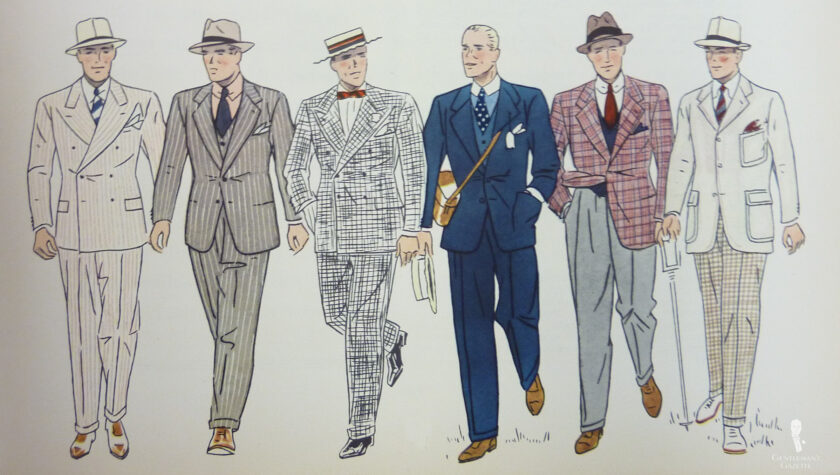
As the weather warms up when spring is in the air or summer fast approaches with its sultry heat, it is time to pack away your cold-weather garments and embrace the lighter-weight fabrics typical of the warmer months. In addition to clothing that keeps you cool, however, you should also strive to build a wardrobe that takes full advantage of the unique styling opportunities of the spring and summer seasons.
- Spring into Spring and Saunter into Summer with Style!
- Why Your Wardrobe Should Be Seasonal
- How to Match Spring and Summer Colors and Patterns FAQ
- “Seasoning” Your Wardrobe, Piece by Piece
- Understanding Color Matching Generally
- Determining Typical Warm-Weather Colors
- The Principles of Color Matching
- Determining Typical Warm-Weather Patterns
- The Principles of Pattern Matching
- Testing Our Principles with Three Outfits
- Conclusion
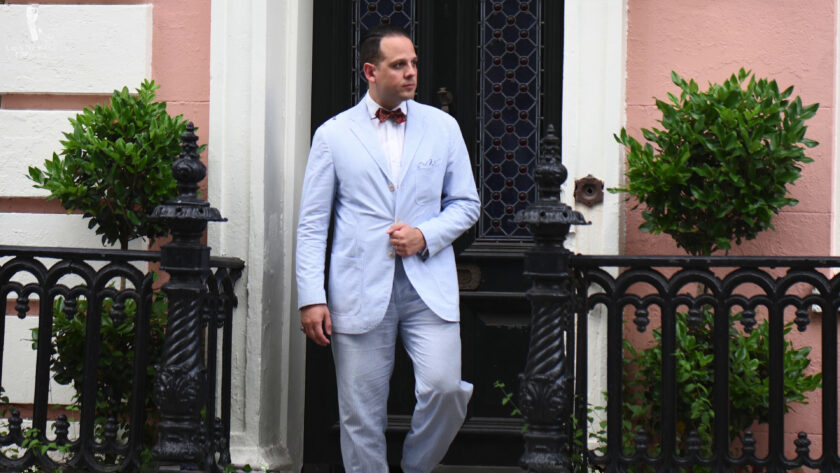
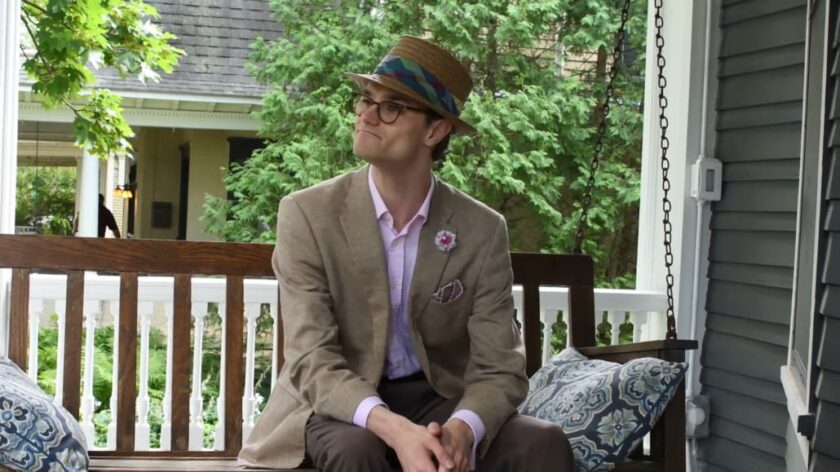
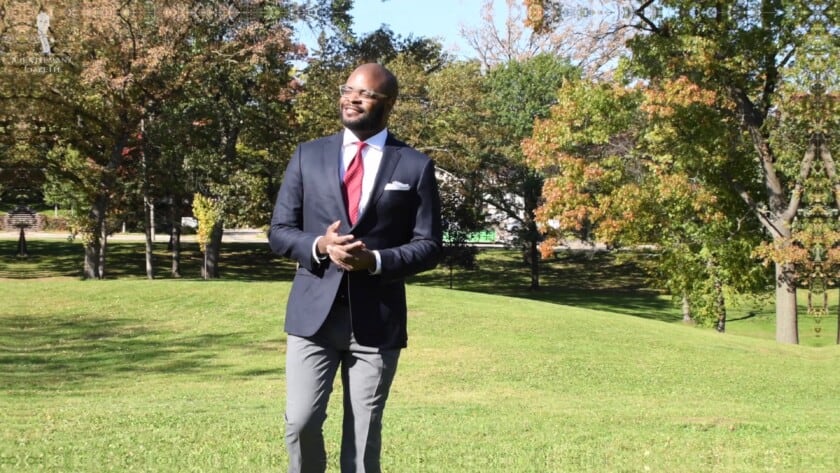
Spring and summer offer you many chances to break out unusual and unique colors that will unlock the full potential of these seasons in terms of hues and exciting patterns that are difficult to wear at other times of the year. Doing so will allow you to craft creative and memorable outfits perfectly suited to any season in the sun.
“When spring came, even the false spring, there were no problems except where to be happiest.”
Ernest Hemingway
Why Your Wardrobe Should Be Seasonal
There Is a Time for All Things
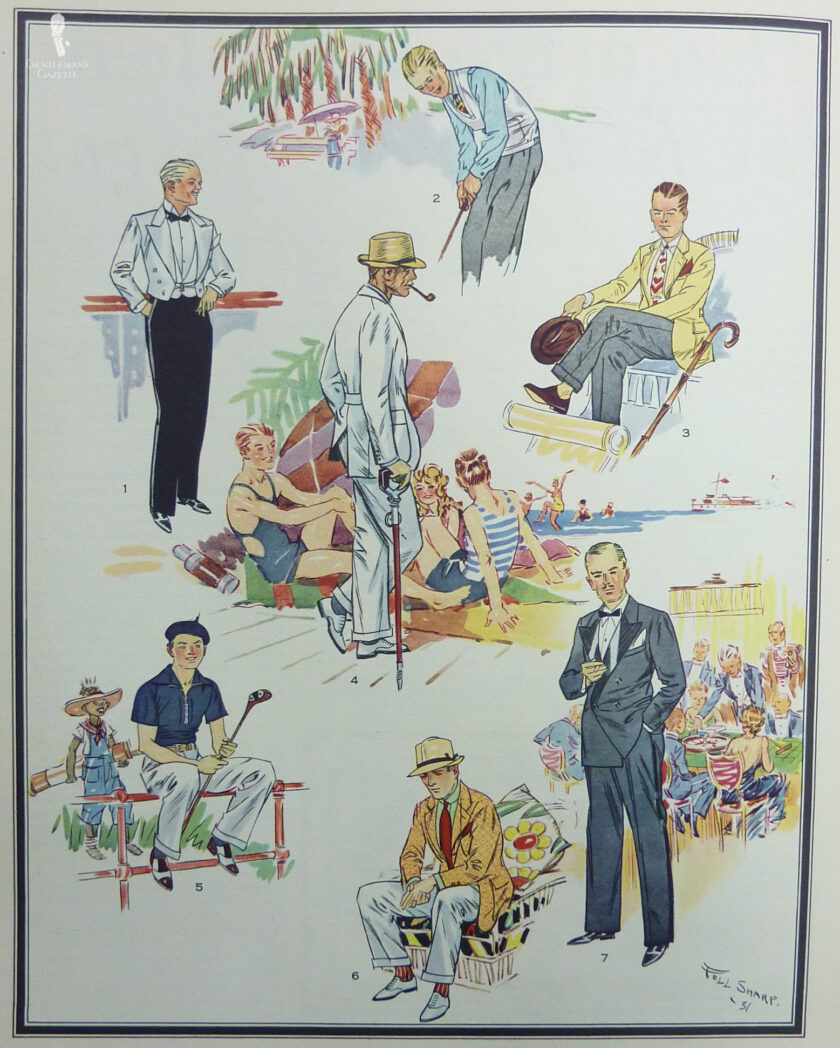
While certain garments, colors, and patterns are well-suited to year-round enjoyment, others are best employed in a particular seasonal setting. This is not to say that there is necessarily an explicitly wrong time to wear particular colors or patterns, but rather that you will derive the greatest use and versatility from your wardrobe by selecting specific items to take full advantage of the seasons.
Different Fabrics & Weaves Help With Temperature Modulation
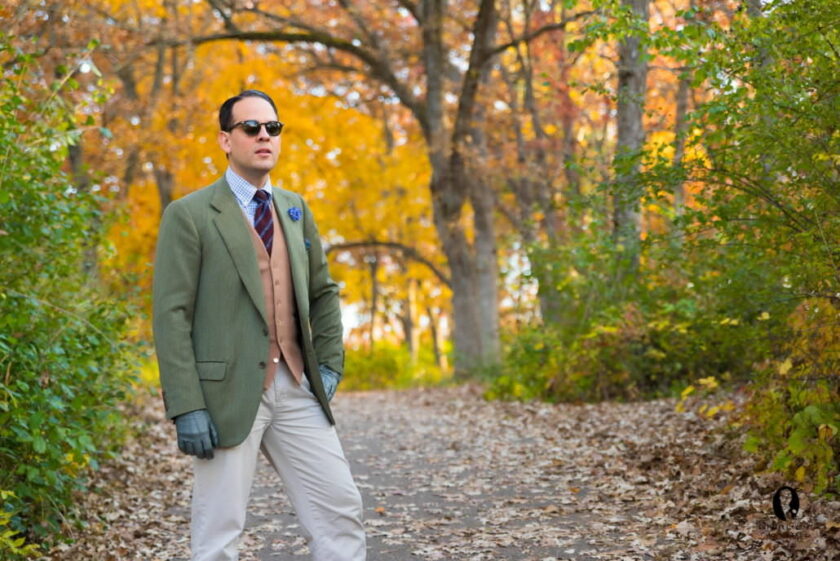
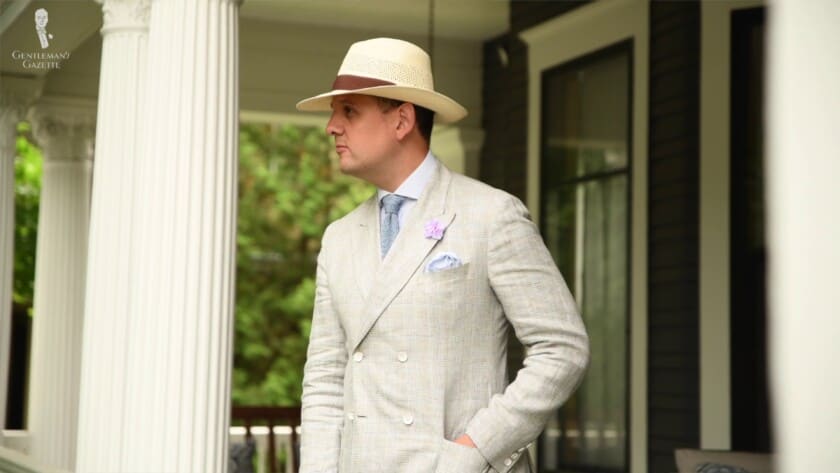
On the most practical level, spring and summer are warmer seasons than autumn and winter, so it only makes sense to wear clothing that will keep you comfortable as the temperature rises. This endeavor applies most obviously to fabrics and materials, with lighter weight and more sheer items encouraging a freer flow of cooling air, but it also relates to colors, which can impact how your well body is cooled.
Learn how to beat the heat while wearing Classic Style!
You Can Achieve Creative Combinations
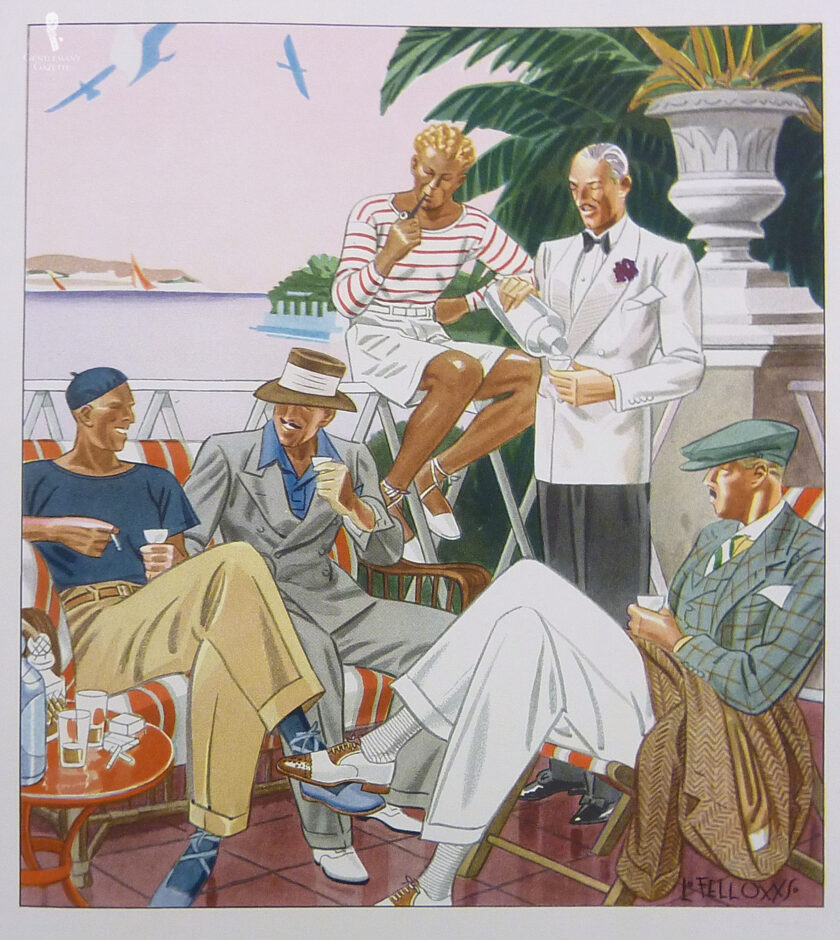
Each season is marked by unique colors that define both its physical appearance and its abstract conception. Leveraging these colors, be they the bright green of spring grass, the deep crimson of a setting summer sun, the crisp orange of fall leaves, or the icy blue of a winter sky, will allow you opportunities for new and exciting color combinations that are harder to achieve when limited to a color palette that is appropriate year-round.
“When daisies pied and violets blue / And lady-smocks all silver-white / And cuckoo-buds of yellow hue / Do paint the meadows with delight”
From Love's Labour's Lost by William Shakespeare
This concept is not a novel one in menswear, and Italian sartorialists even have a name for it: scorpacciata. While this term literally means to have feasted on tasty delights, in menswear, it relates to savoring seasonal fashions as one does food. Just as strawberries are especially delicious in late summer on an Italian beach, so too is a canary-yellow ascot particularly well-suited, stylistically, to a hot summer day.
Learn more about Scorpacciata here!
Increased Variety
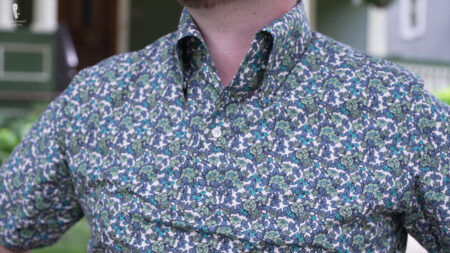
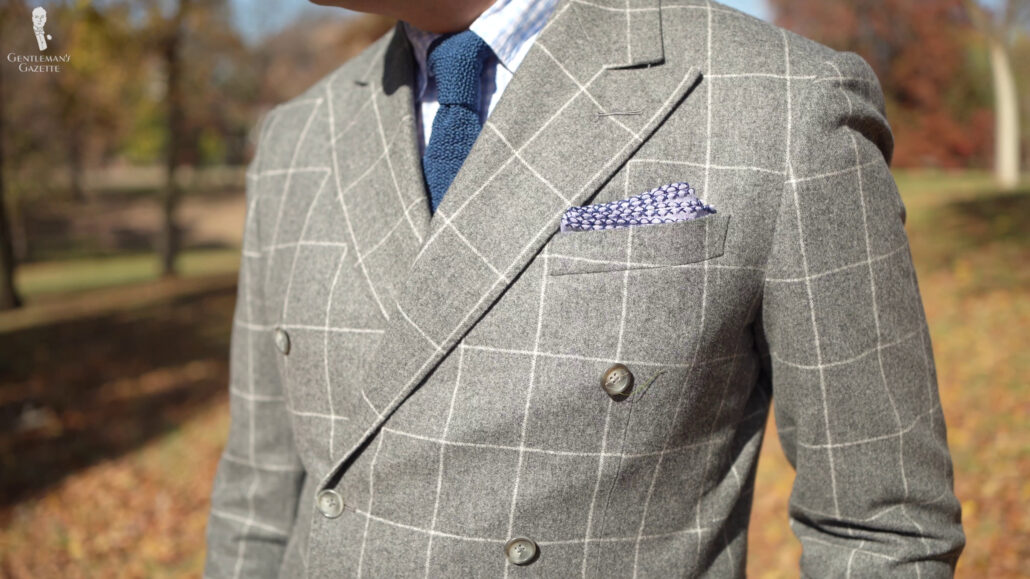
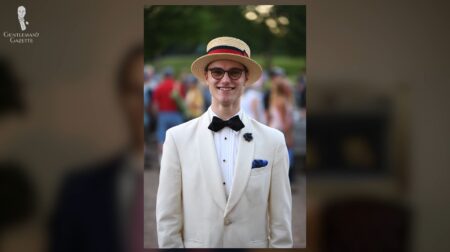
When building a Classic Wardrobe, considerable emphasis is placed on versatility and good cost-per-wear. However, overreliance on such articles can give the impression that your clothing selection is somewhat limited and perhaps even intentionally spartan. Therefore, the occasional introduction of high-quality, attractive seasonal pieces, which appear for a few weeks and then disappear for a seemly interval, will contribute to the perception that your clothing collection is more profound and more varied than it might otherwise appear.
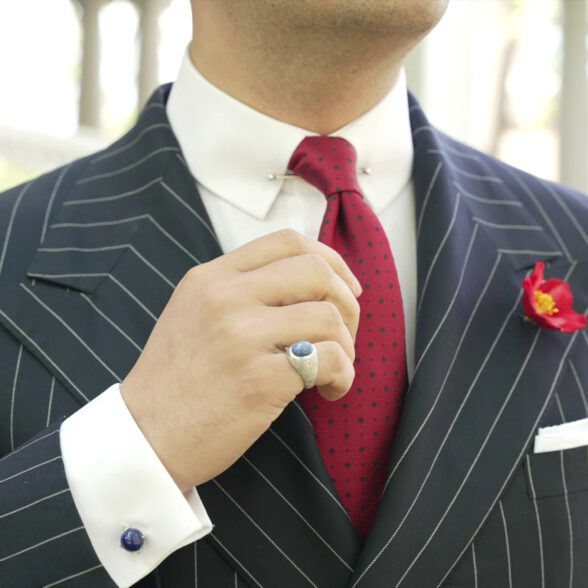
Understanding Seasonality and
Formality
Because of their bright hues and generally bolder appearance, spring and summer colors and patterns are usually more casual than their cold-weather counterparts. Therefore, you must be especially mindful of the formality scale when employing seasonal coloration in your outfits. In an office environment, for example, warm-weather colors are usually restricted to shirts, ties, and pocket squares because dark blue and gray suits are effectively compulsory year-round in formal business spaces. Accessories, however, make it a refreshing breeze to inject spring and summer colors and patterns.
How to Match Spring and Summer Colors and Patterns FAQ
Should you vary your attire based on the seasons?
While you should always maintain an extensive and versatile year-round wardrobe, a few choice seasonal pieces will help you add personality and variety to your looks. Seasonal pieces can also be better suited to handle the unique climate and conditions that typify each season. Therefore, it will usually behoove you to have a few seasonal garments and accessories at your disposal.
What does “warm weather” clothing mean?
Warm-weather clothing consists of garments and accessories that are intended to be worn when the weather is warm. Usually, these items will be made from lightweight, sheer materials that will improve airflow and keep you cool when the weather is hot. They also tend to feature colors and patterns that are evocative of the season, usually in bright or pastel shades.
What are typical spring and summer colors?
Because the sun is shining and everything is in bloom, warm-weather colors are reminiscent of flowers, green woods, and the seaside. Typical of this palette are all shades of blue, cool reds and oranges, bright greens, pink, lilac, violet, light and medium browns, light greys, off-whites, and whites.
Which warm weather colors look good on men?
Most warm-weathers colors will complement nearly every skin tone. The only major exception involves very fair men with blonde hair and pale skin. Neutrals and off-whites may make these gentlemen appear washed-out, but fortunately, there are many other warm weather colors from which to choose.
How do you know if colors go well with each other?
In most cases, you can be sure that colors from the same color group – such as shades of green – will go well together, as will complementary colors. Complementary colors are opposite each other on the color wheel and naturally pair in a pleasing manner, like blue and orange. Keep in mind, however, that color coordination is subjective, and depends upon the effect you desire: even clashing colors could, potentially, look pleasing together if that is the look you want to achieve, even though such a look is not typical of Classic Style.
Can you wear more than three colors at a time?
Yes, you can! With attention to scale and color harmony, you could almost wear a rainbow of colors and still appear stylish. This guide will teach you exactly how to achieve this effect.
What are typical spring and summer patterns?
Florals, broad stripes, and paisleys are two of the most common spring and summer patterns, although other patterns, including windowpanes and polka dots, can become warm-weather patterns when rendered in warm-weather colors.
How do you know if patterns are clashing?
Patterns tend to clash on two occasions: when the designs counteract each other, such as diagonals running in opposite directions, or when they bleed into each other, such as stripes that collide with slightly different stripes. The key to pattern matching is ensuring sufficient distinction between the patterns. This distinction can be easily achieved by wearing patterns at different scales and by mingling busy with quiet patterns. Both of these processes are explained in detail in this guide.
“Seasoning” Your Wardrobe, Piece by Piece
How to Add Seasonality to Every Type of Garment
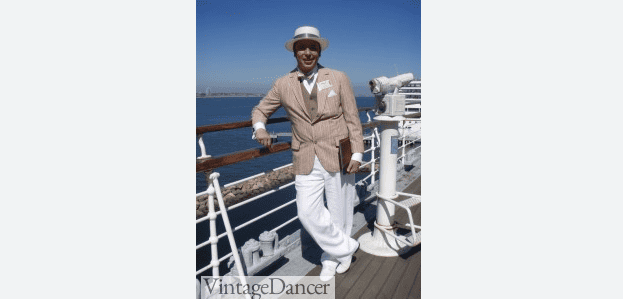
Depending on circumstances like occasion and formality, it may not be practicable to add a seasonal flair to every garment in your ensemble at all times. The following information will teach you how to wear particular types of menswear articles seasonally but without compromising on their greater functionality.
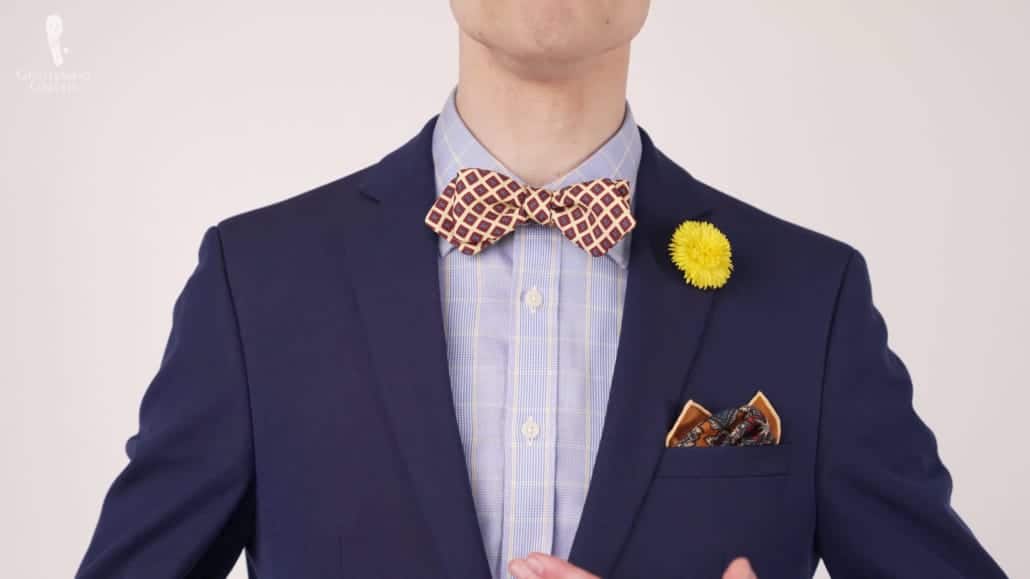
Neckwear
Warm-weather neckwear, whether a necktie, bow tie, ascot, or summer scarf, should usually contrast in intensity with your shirt. For instance, if you wear bold neckwear, pair it with a white shirt for the greatest visual effect, or with a solid shirt in an unobtrusive seasonal color, like pastels.
Conversely, more sedate neckwear that still draws from a warm-weather palette can be worn well with louder shirts. Meanwhile, a loud shirt with loud neckwear can prove to be a bit too noisy unless of course a cacophony of color is the intentional look you wish to cultivate.
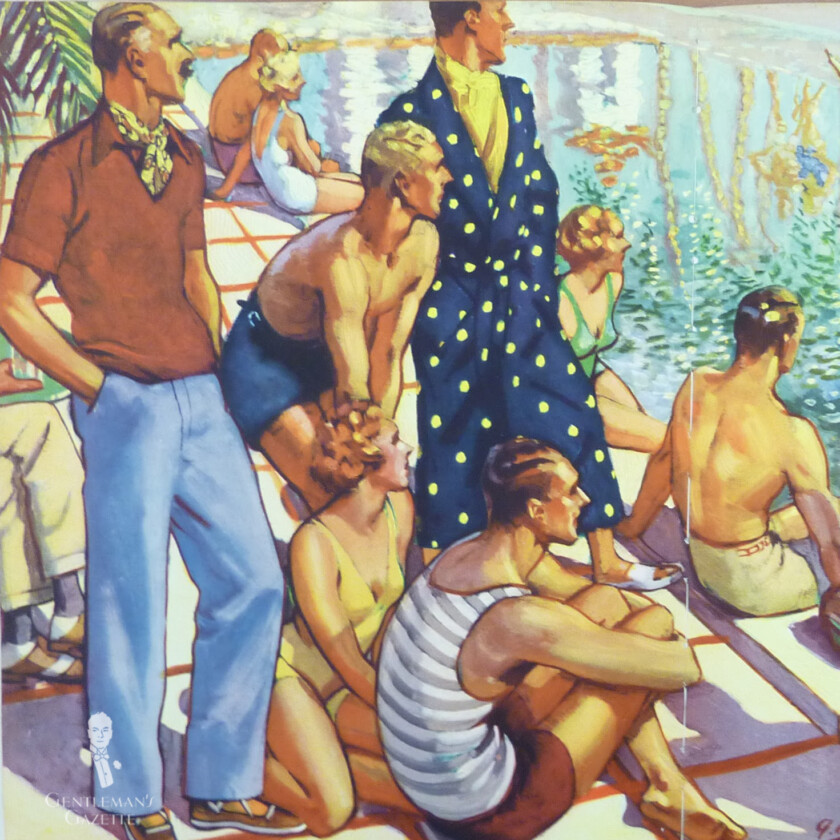
RECOMMENDED
Ascots: An Ageless Awesome Accessory
If you love the debonair look and laidback elegance of the early 20th century, the casual ascot may be the perfect warm-weather accessory for you. Not as stuffy as a necktie, not as stuffy as a bow tie, the ascot encapsulates casual coolnes that helps keep you cool because of its loose drape around your neck. If you would like to learn more about this exceptional vintage accessory, be sure to read our style guide.
Shop for quality casual and formal ascots from Fort Belvedere!
The Best Spring and Summer Neckwear from Fort Belvedere
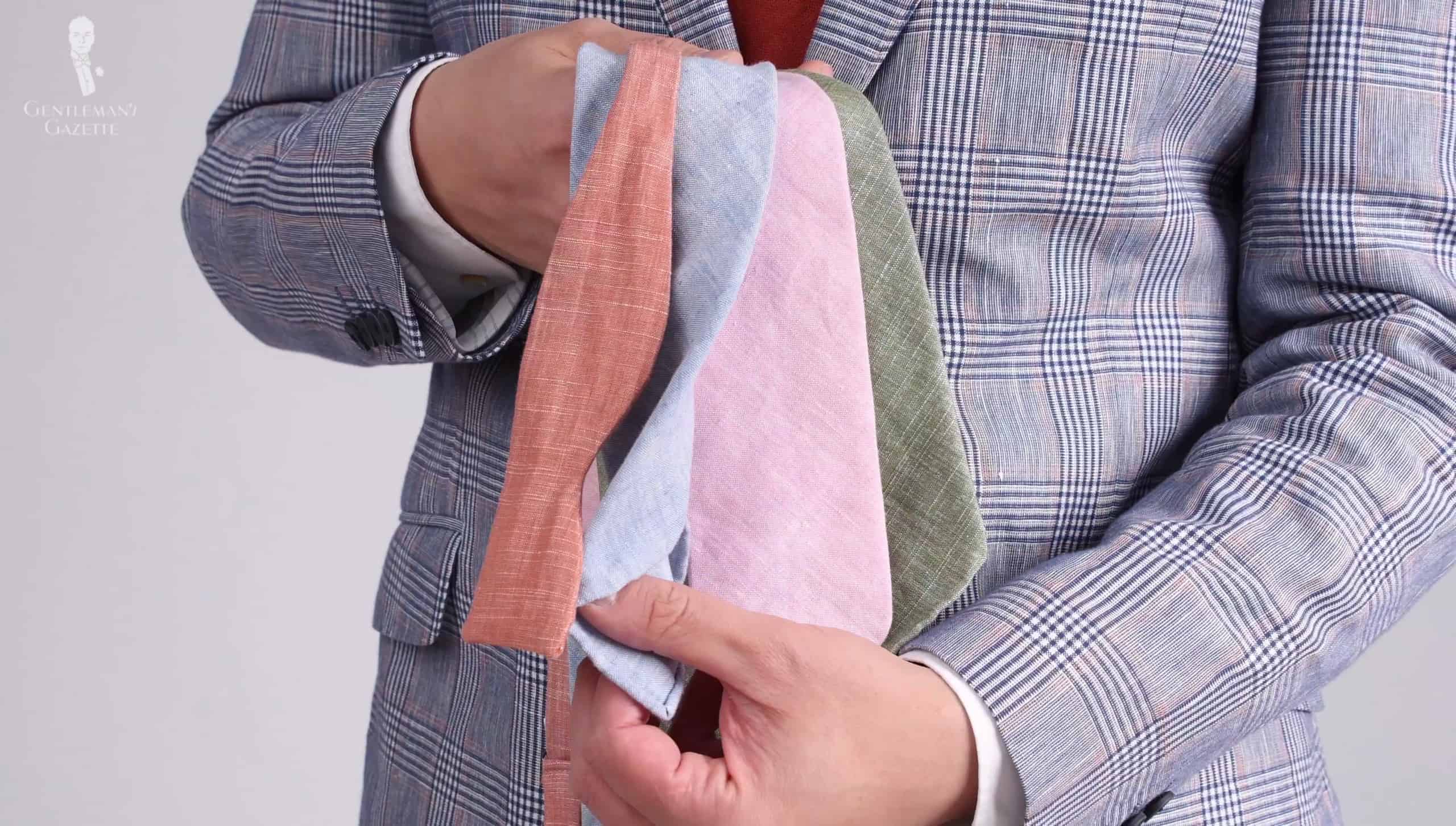
The Perfect Spring Fling
Beautiful Bow Ties
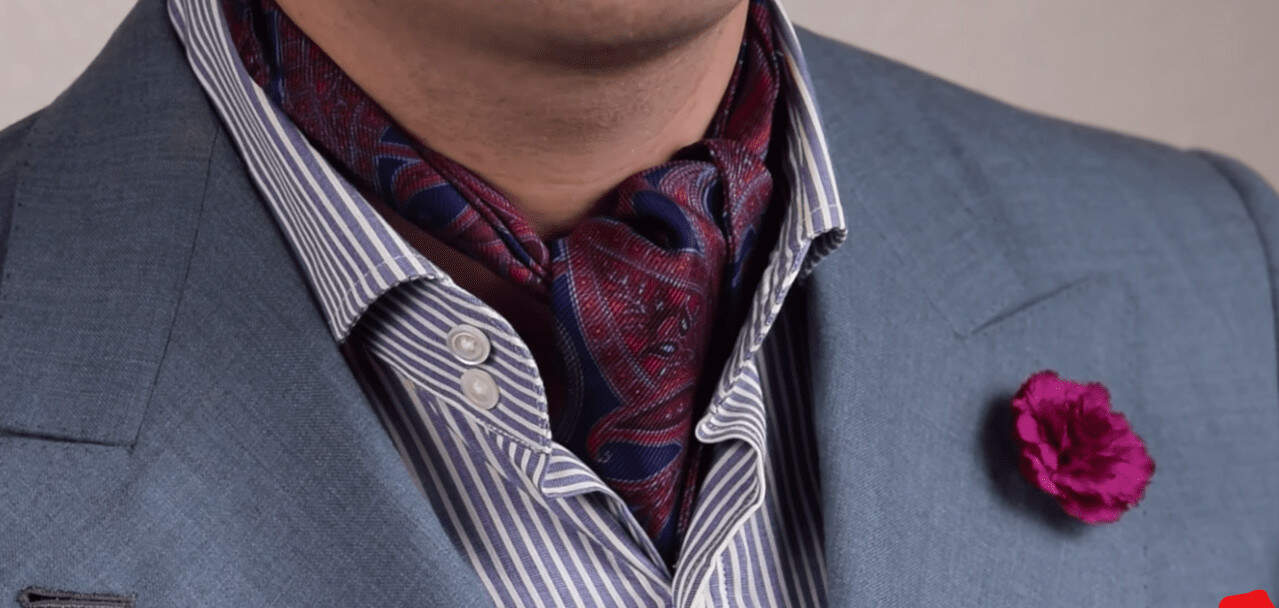
Retro Warm-Weather Wonder
Astounding Ascots
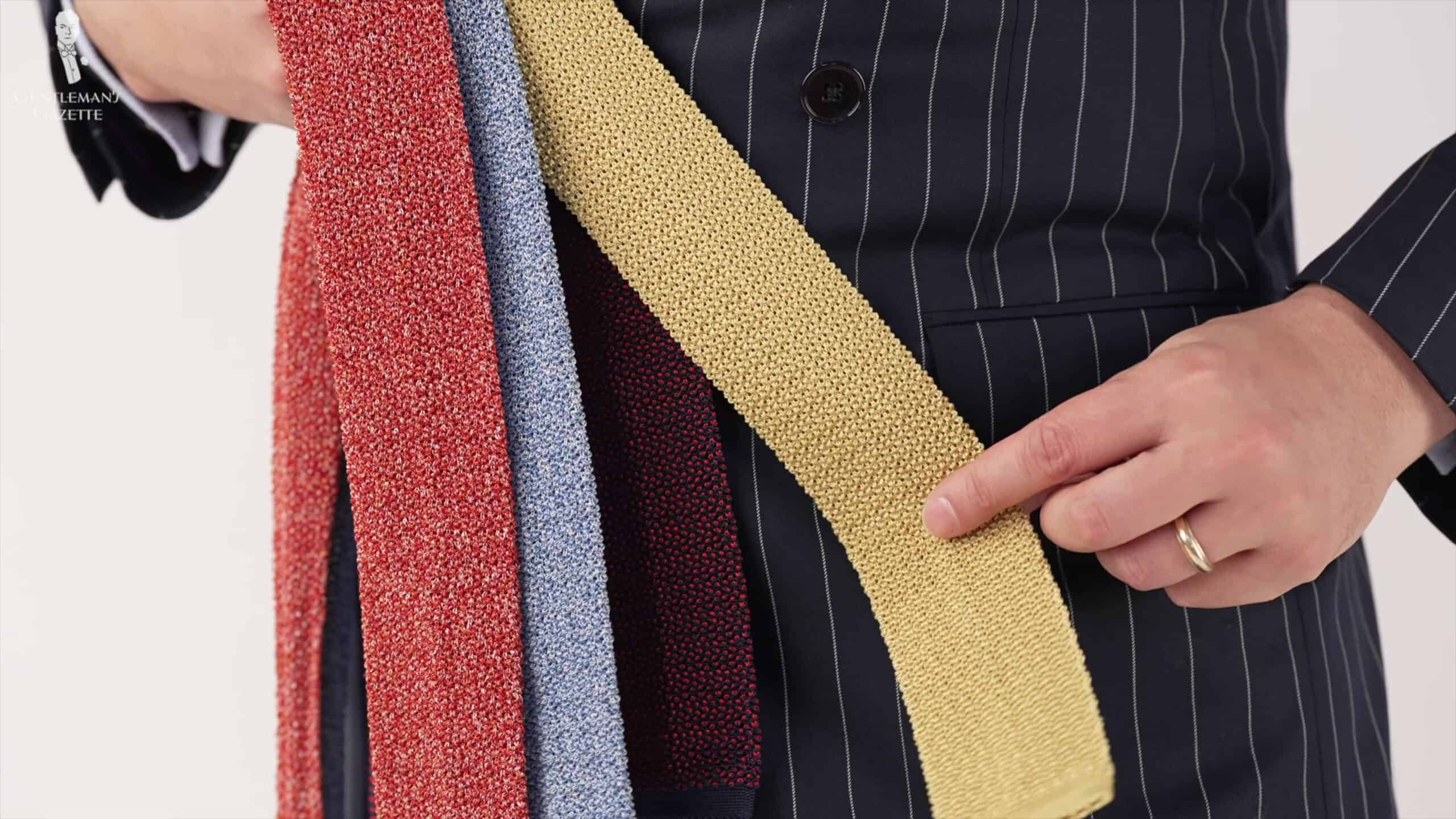
Summertime Standards
Nifty Neckties
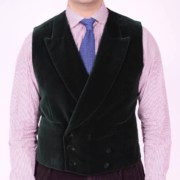
Shirts
Especially in more casual settings, warm-weather seasonality allows for the adoption of shirts in a wide variety of colors and patterns. In addition to blues in almost any shade, spring and summer are exceptional times for shirts in cool reds and oranges, yellow, bright greens, violet, lilac, pink, and light brown.
Shirt patterns in the spring and summer can also be extremely varied. Conventional checks, stripes, and windowpanes are popular, as are more audacious options, especially in sports shirts, like polka dots, paisley, and similar repeating patterns.
“He was standing in front of the mirror, buttoning a blue-and-white seahorse- patterned sport shirt of Dickie’s that he had never worn, when there came a knock at his door.”
From The Talented Mr. Ripley by Patricia Highsmith
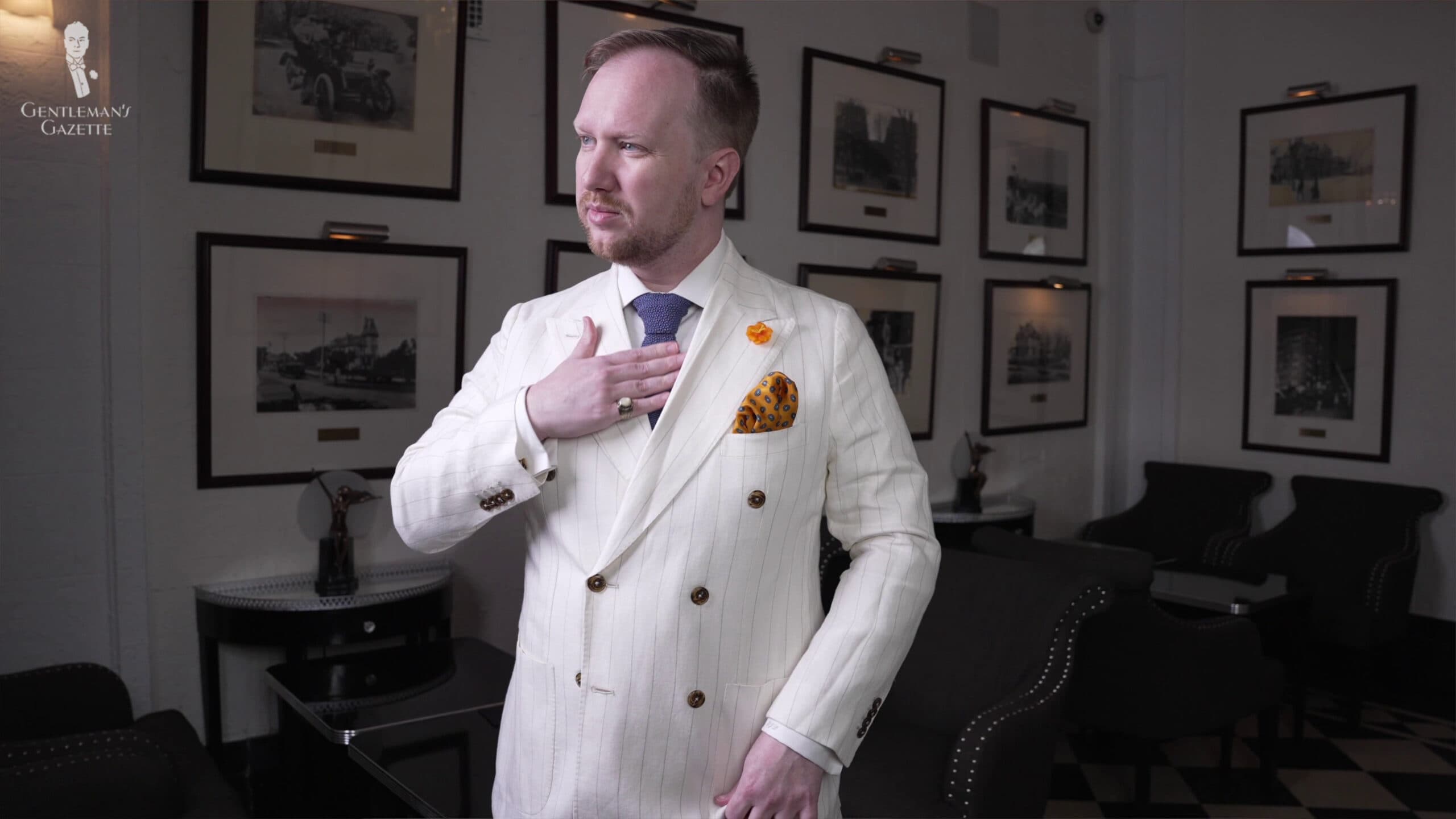
Jackets
Spring and summer are great times for fun, colorful jackets with unexpected patterns, especially in more casual settings. Whether worn as a suit, sport coat, or blazer, warm-weather jackets will boost the look of your outfits and make it clear that you know how to savor the season.
Common warm-weather jacket colors include ivory, light grey, medium and light shades of brown, and most shades of blue. These colors are relatively sedate and will also function well year-round. For a bolder selection, consider explicitly spring and summer colors like pinks, greens, violets, and white, and be aware that full suits in these colors, in particular, will be considered especially bold.
Patterns typical to spring and summer jackets tend to be the more casual varieties of stripes, checks, and windowpanes. When rendered polychromatic such jackets have a distinctly whimsical appearance that can be very in keeping with the right kinds of warm-weather events. For a more understated look, visual interest can also be created through unusual weaves, like herringbone, or uniquely textured fabric, like linen or seersucker.
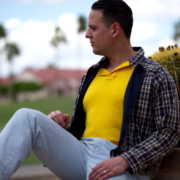
Trousers
Trousers often serve to ground your outfit, and so, in general, they should remain a relatively sedate component of your outfit. If you wish to go bold with your pants, consider toning down the other articles you are wearing unless you are intentionally dressing in a very loud way.
The most conventional trouser colors for spring and summer are white, stone, buff, olive, medium and light browns, light grays, and most shades of blue. Bolder trouser colors, like salmon pink, light green, and red, can certainly be worn, but they are suited primarily for casual occasions.
Warm-weather trousers are available in patterns and textures similar to jackets, such as stripes, checks, and windowpanes. Unique weaves, such as herringbone, are an ideal way to add visual interest without overwhelming your viewer.

Pocket Squares
Conventionally, pocket squares were a favored vehicle for adding seasonal sizzle to Classic ensembles. Located against the broader, grounding effect of the jacket, pocket squares can carry off complex and complicated patterns and bright colors without being overwhelming, which cannot always be said for shirts or neckwear.
Accordingly, you should, generally, contrast the intensity of your pocket square with that of your jacket. A bold pocket square should be worn with a jacket in a relatively plain weave or pattern, while a solid-colored pocket square will be the most elegant companion for a jacket in a bold pattern like a check, windowpane, houndstooth, or the like.
The Perfect Warm-Weather Pocket Squares
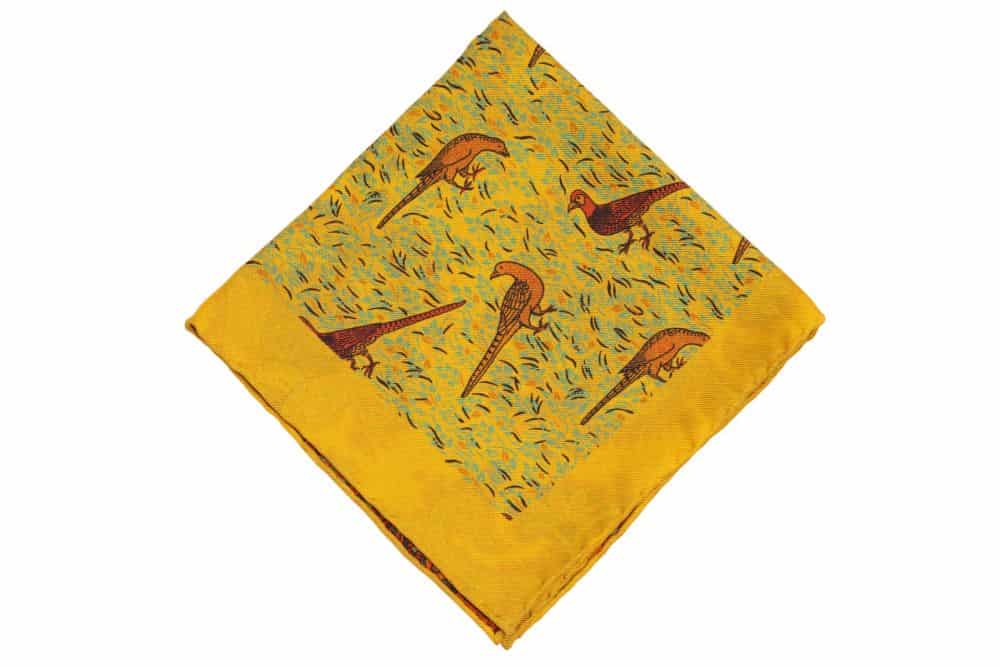
Dandy Delights
Yellow Silk with Orange Pheasants
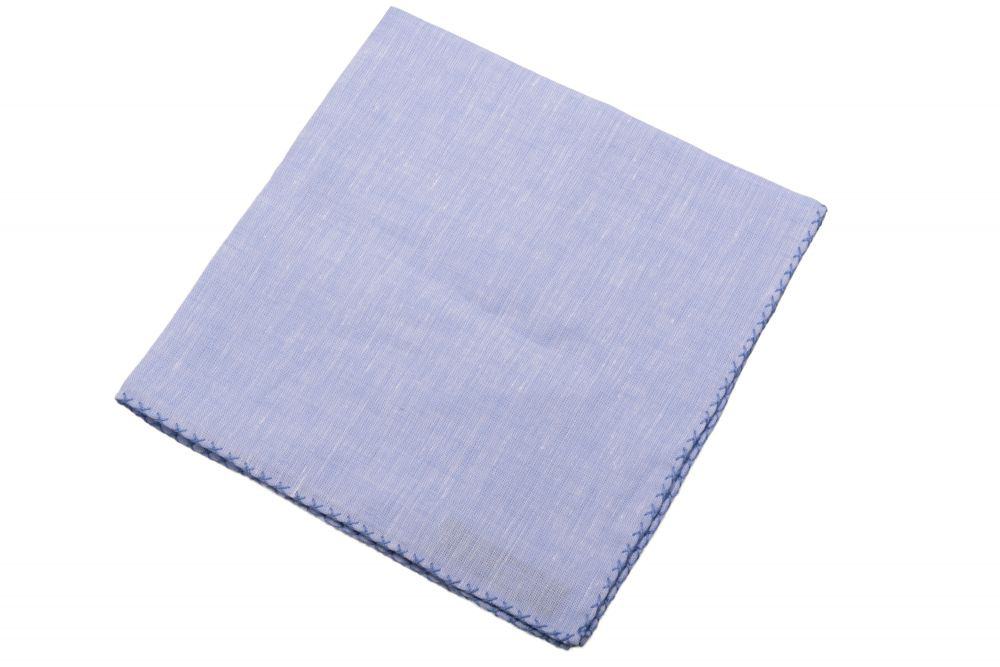
Understated Elegance
Light Blue Linen with Blue Border
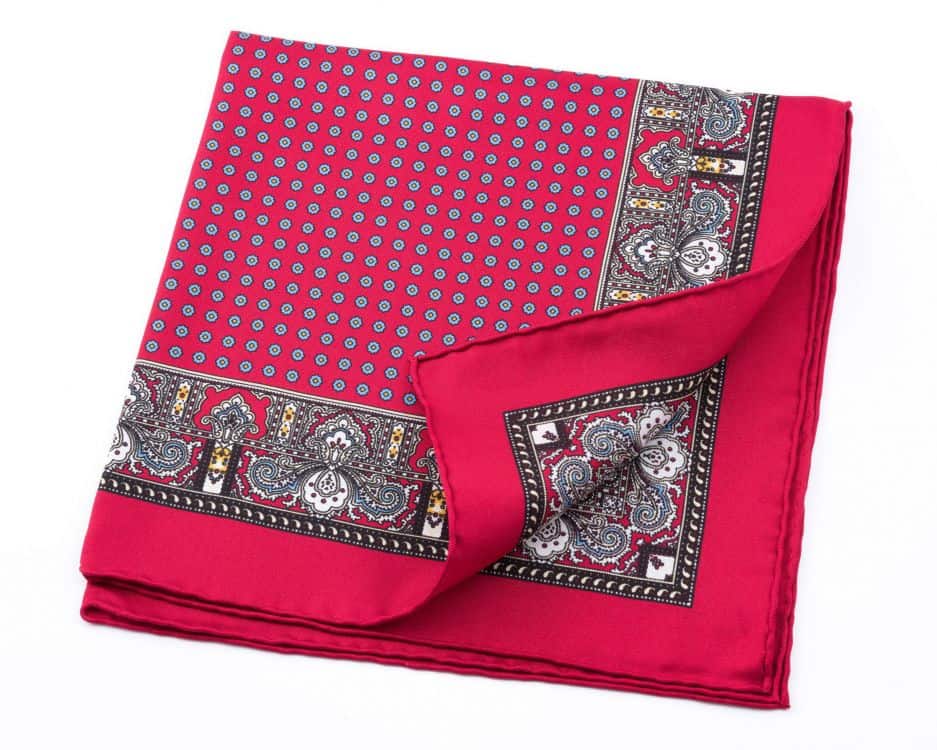
Sizzling Style
Red Silk with Dotted Motif and Paisleys
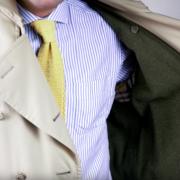
Outerwear
During the shoulders of spring and summer, you may require the use of a lightweight outer garment to help keep away the chill, especially in the early morning or at night. Casual jackets are admirably suited to this purpose, as are topcoats, like the trenchcoat, or a sweater or cardigan.
To guarantee maximum versatility, your warm-weather outerwear should maintain a more neutral color and pattern palette typical of the rest of your outerwear. This precaution ensures that the outerwear can harmonize easily with a wide variety of ensembles that are likely to be bolder.
You may feel free, however, to experiment with lighter tones, such as tans, light browns, and light blues, to help distinguish your warm-weather outerwear from its cold-weather counterparts, and unusual weaves are also a refined way to provide an unexpected, pleasing look.
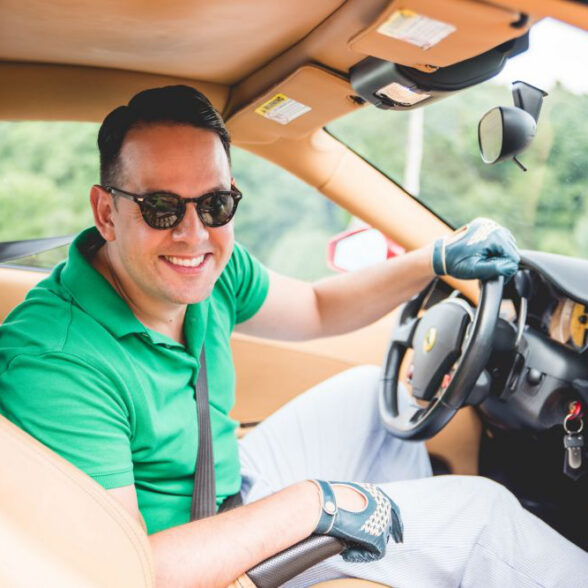
Perfect for the shoulder seasons?
Driving Gloves
A fine pair of unlined leather dress gloves is a particularly dapper option for the cooler start to spring and the chillier end to summer. To cultivate an incredibly dashing and unexpected appearance, few options surpass driving gloves. As is typical of day gloves in the Classic Style, interesting colors are the rule year-round, but especially so during the warm and hot months.
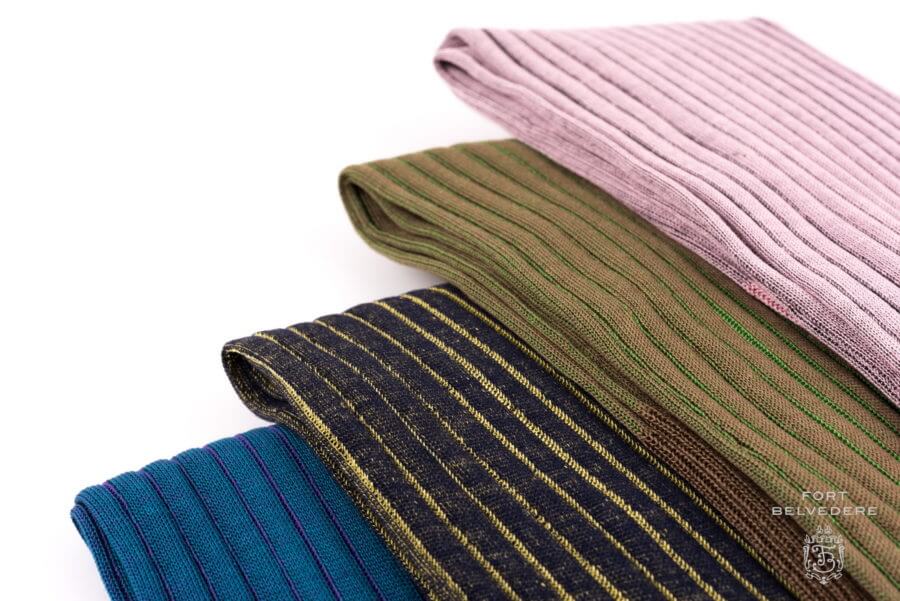
Shoes and Socks
While you may indulge in flashy shoes during the spring and summer, in general, a more sedate, neutral palette will ensure that your shoes can pair easily with many outfits, ensuring a good cost-per-wear ratio typical of a quality-over-quantity approach. Classic summer shoes, such as boating shoes, loafers, bucks, and spectators, provide avenues for warm-weather colors without appearing overdone or distracting. Lighter color shoes, like brown shoes and tan shoes, are especially nice for warm weather.
The most timeless method of introducing color around your lower half is to wear classically-inspired dress socks festooned with patterns and hues typical of the Golden Age of Menswear. Dapper vintage gentlemen wore colorful socks year round, and the spring and summer are the perfect occasions for unexpected pastels and more exuberant patterns.
The careful and attentive injection of color around your feet creates visual interest that sets your style apart while also embracing the fun and frolicsome aspects of spring and summer, making the colors and patterns of those seasons an integral, if unexpected, aspect of your larger look.
Superlative Spring and Summer Socks
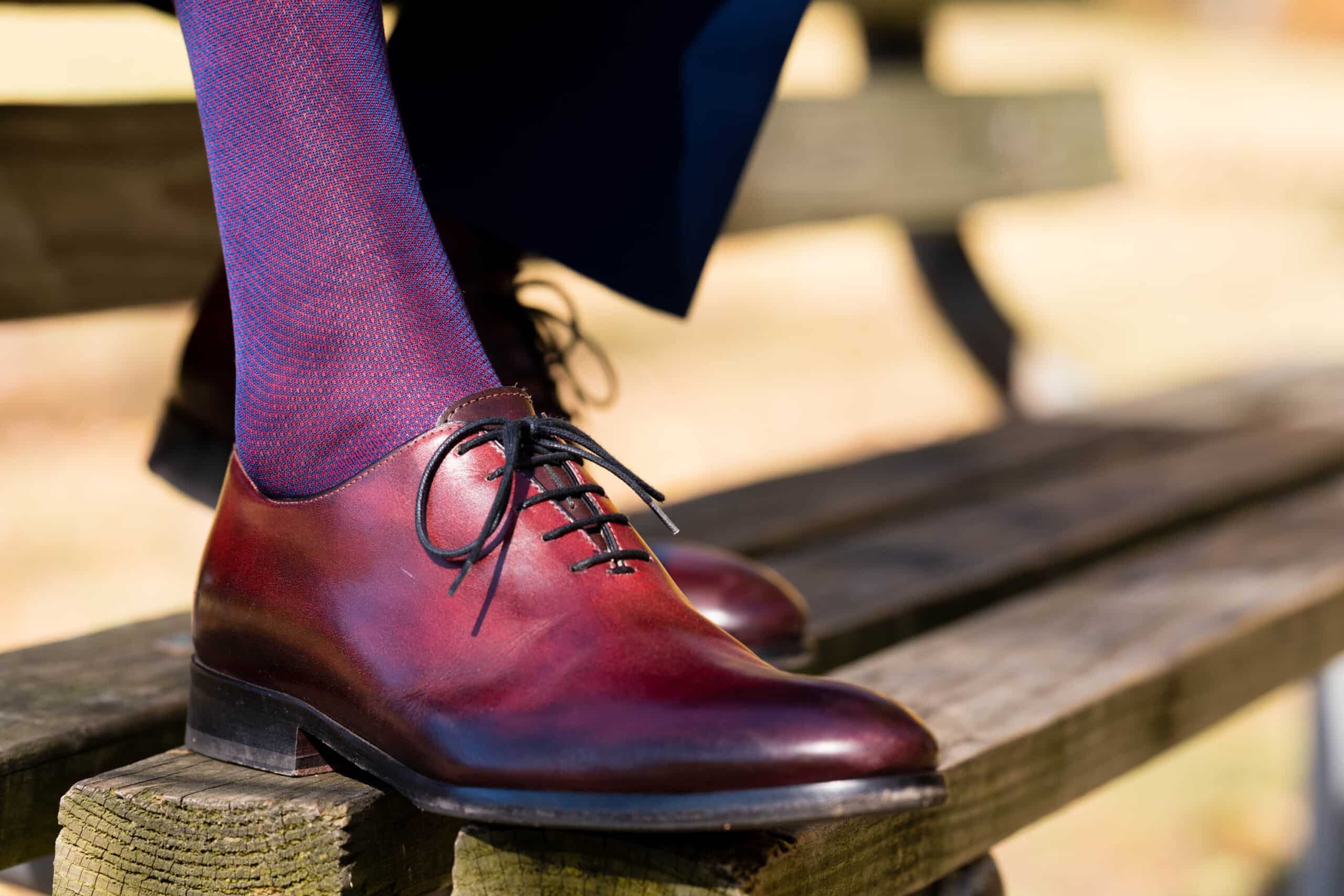
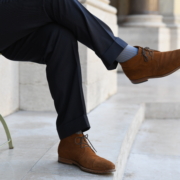
Quality Fort Belvedere Dress Socks
Shadow Stripe Light Gray & Blue

Quality Fort Belvedere Dress Socks
Two-Tone Blue & Red
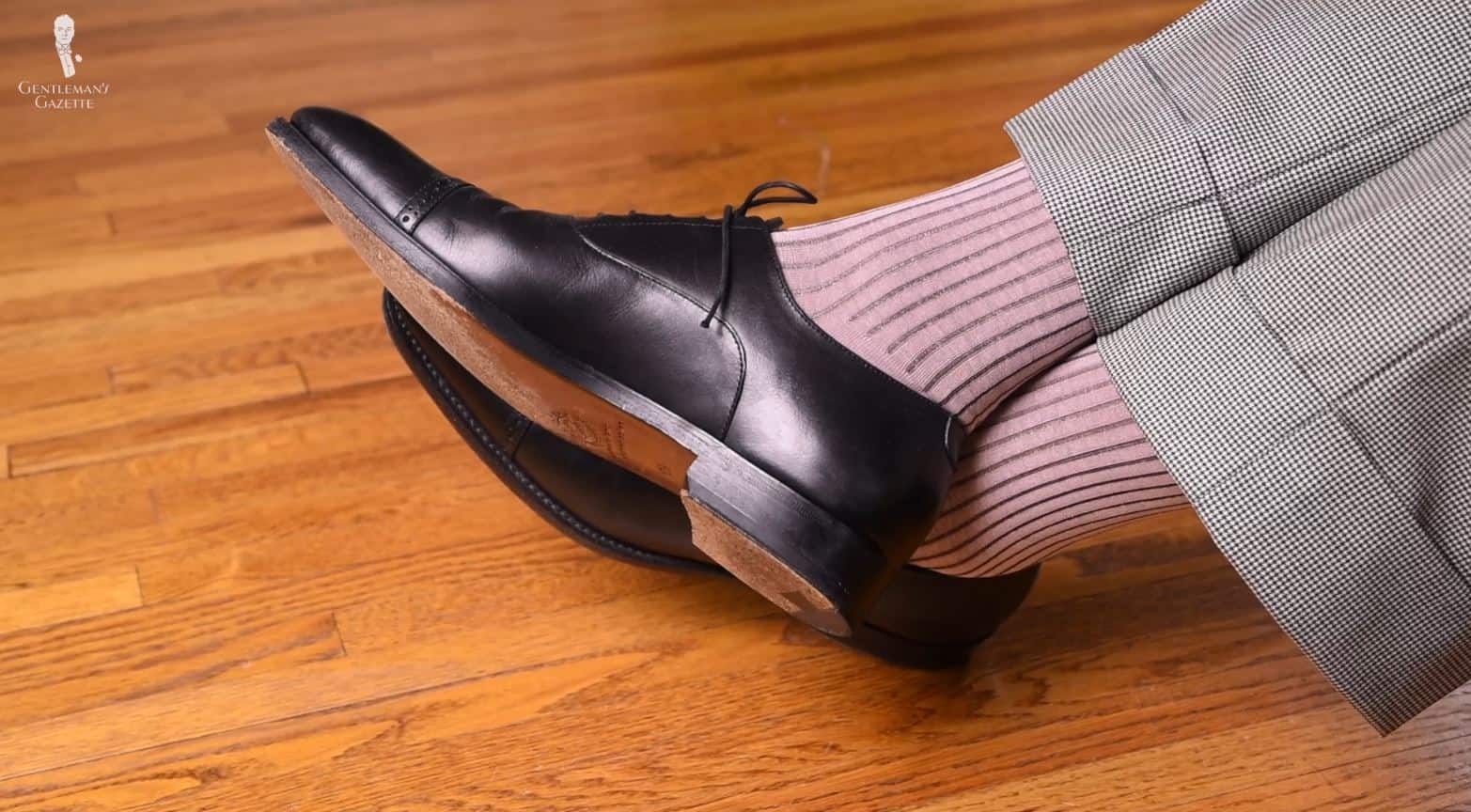
Quality Fort Belvedere Dress Socks
Shadow Stripe Pink & Gray
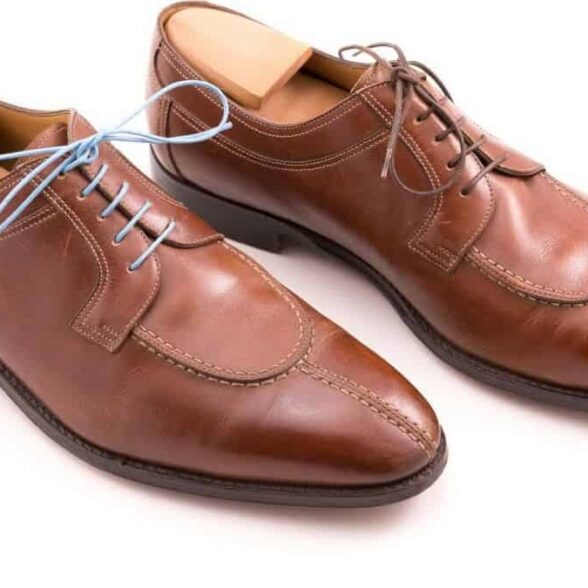
As good as a new pair of shoes?
Shoelaces
Believe it or not, there is a simple way to get a “new” pair of shoes of the same quality as your best current pair at a fraction of the cost. All you need to do is switch out the shoelaces on that pair of shoes. A new pair of colorful shoelaces can completely change the look of a pair of shoes, altering its overall formality, increasing its variety of color, and providing an easy opportunity for chromatic integration with the rest of the outfit.
Learn how to properly employ shoelaces!
Understanding Color Matching Generally
Review the Fundamentals Before Incorporating Seasonality
While some stylists in menswear seem to have an innate talent or gift when it comes to crafting seamless ensembles that incorporate colors in varied and creative ways, ultimately, the concepts of harmonious color pairing are relatively easy to follow when you know where to begin.
“The purest and most thoughtful minds are those which love color the most.”
John Ruskin
The best place to begin when discussing color is the color wheel, an artistic tool widely used to illustrate how different types of color interact and contrast with each other. As you might have guessed, this concept is best explained in its entirety as part of a dedicated guide, the video for which is above.
Once you have reviewed this foundational information, you will find the following guide considerably more simple to follow.
Determining Typical Warm-Weather Colors
“Warm” and “Cool” Colors Are Not Restricted to Warm and Cool Weather
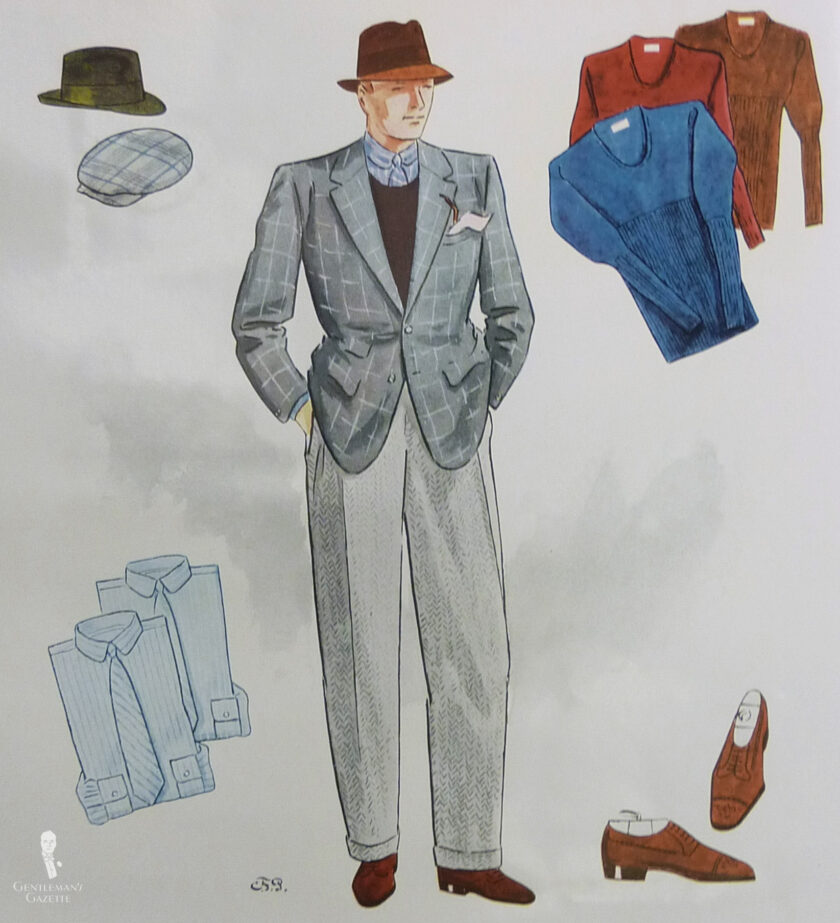
While colors are correctly classified as being “warm” and “cool,” these orientations do not necessarily reflect how appropriate colors are in warm-weather situations. In reality, both warm and cool colors, and shades of these colors that can be either warm or cool, can be warm-weather colors.
How to Wear Cold Weather Colors in the Summer
Draw Color Inspiration from the Natural World
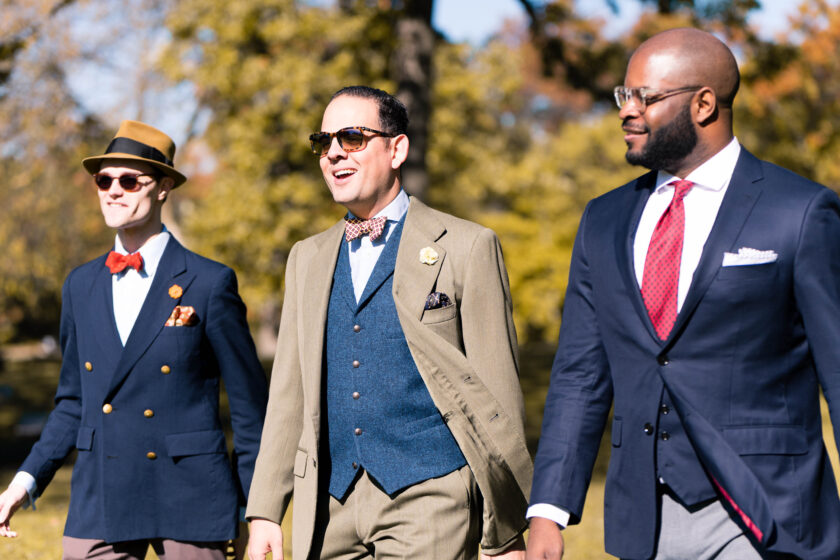
One of the easiest ways to identify a warm-weather color is by its presence in nature during those respective seasons. Spring and summer are seasons for all the colors we see in nature when flowers bloom, and fresh green leaves and grass grow, including cool reds like burgundy, yellows, pinks, violets, purples, bright greens, rich dark greens, blues, and browns.
Shop for accessories in the colors of spring and summer!
The colors of spring and summer are ideally matched with the colors that form their backdrop in a garden. The petals of a flower are usually surrounded by petals in other colors and by green leaves. Different shades of brown are also always plentiful. Think of the twigs that you see at a blossoming apple tree and their colors; some are greenish-brown, and others are very dark. And on the ground, the color of the soil and the sand are in the picture too. The blue sky is the backdrop for all of this. Think of this palette when you put a spring or summer outfit together. Use different tones of brown and sand for the bigger pieces of the outfit like jackets, pants, or suits, with smaller pieces in stronger colors to add spice to the mix.
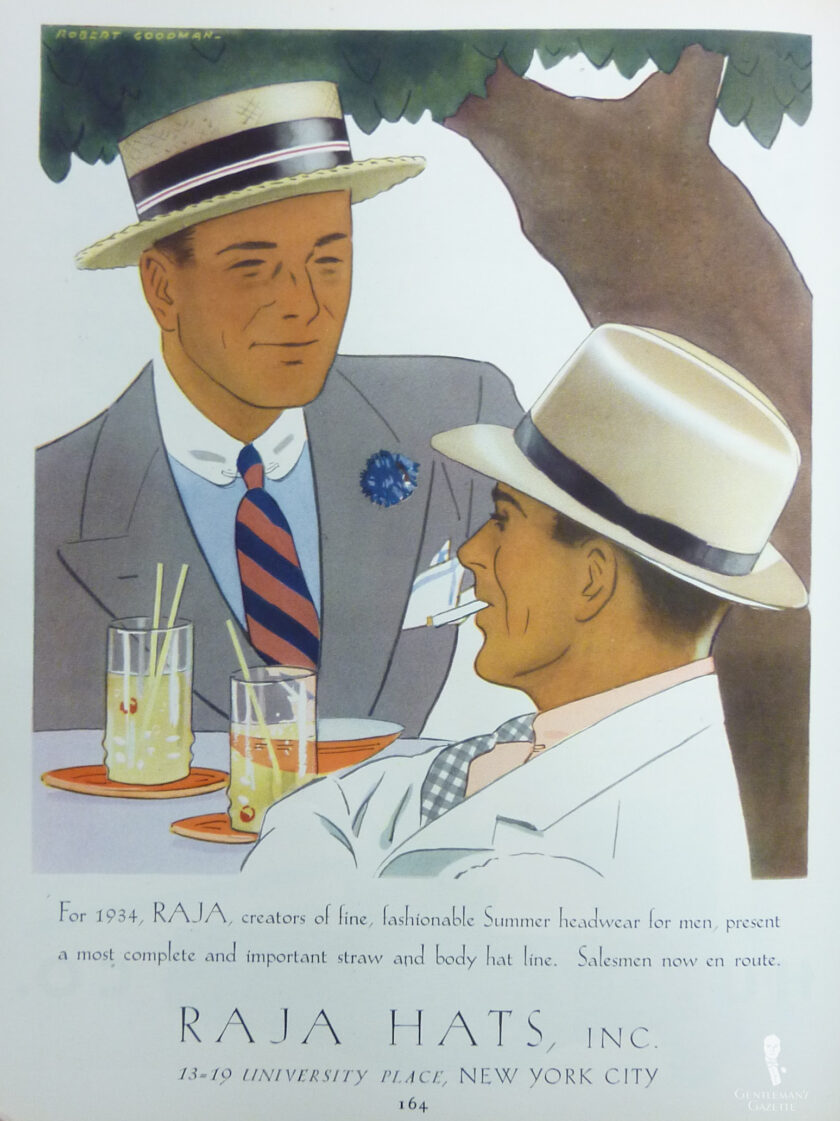
Warm-Weather Colors Can Be Intense
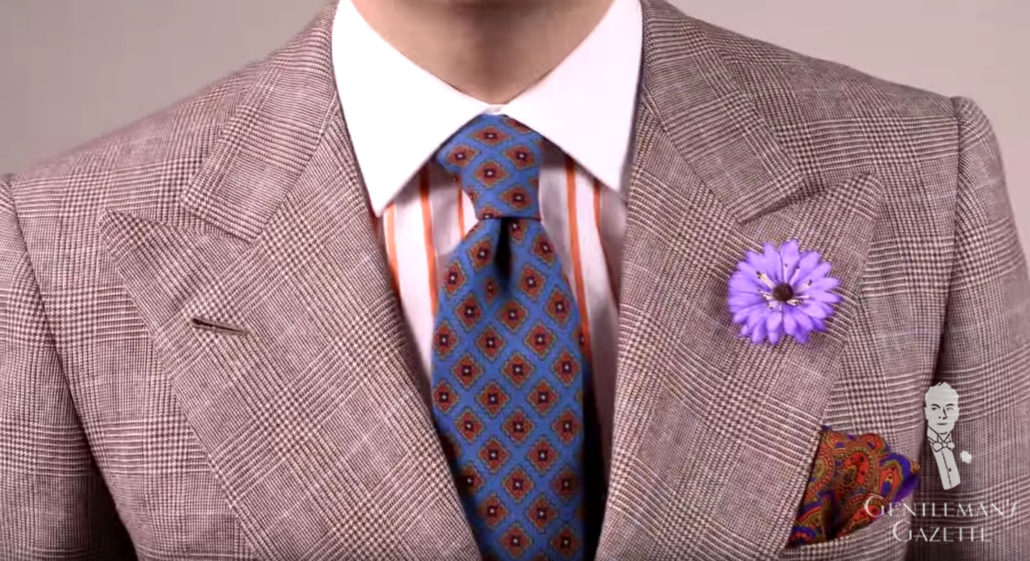
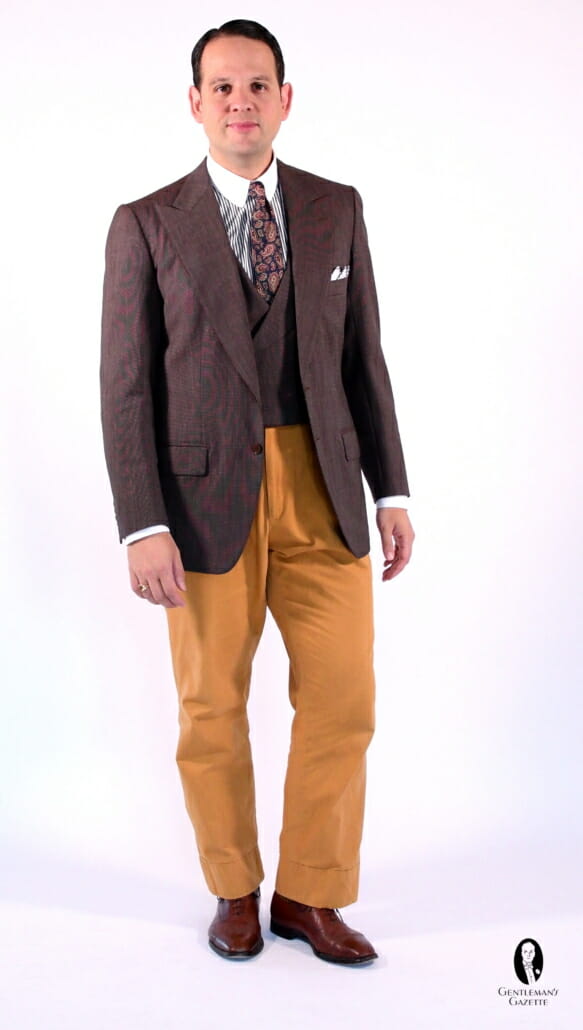
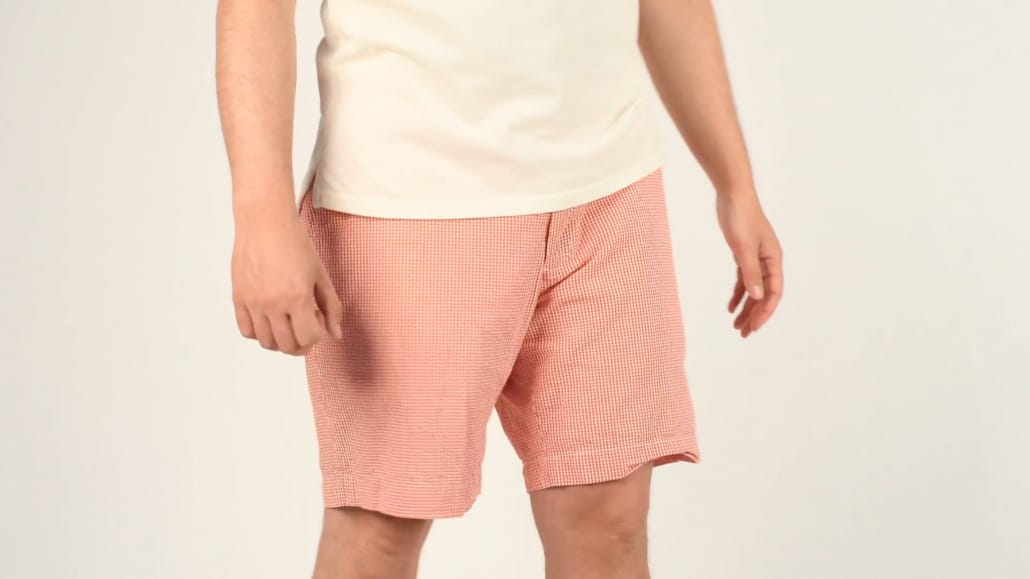
As they are usually vibrant, bold, and bursting with life, the colors often associated with spring and summer are so intense that they can easily be overwhelming. Thus it is advisable to use them sparingly in the total body of your outfit, and more regularly as a portion of a combination or as decorative filigree in the form of accessories or detailing.
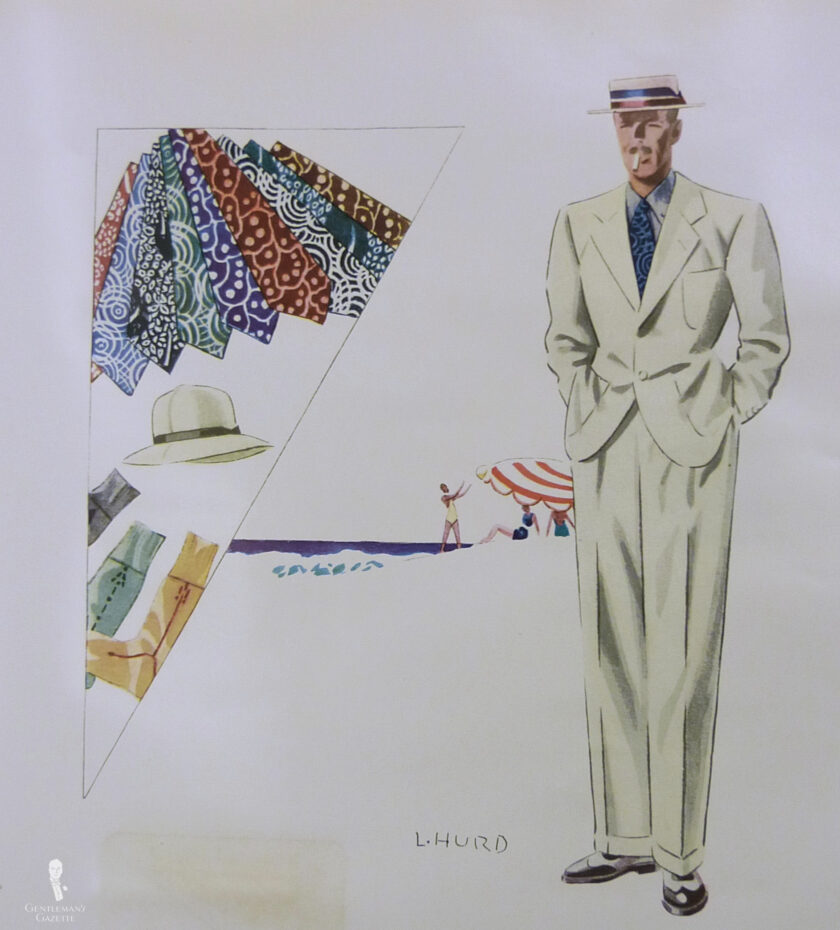
As an example, cotton trousers in grass green are lovely with a blue linen blazer, but a grass green linen suit would be too much for most of us. This does not mean that a grass-green suit is totally out of the question, but only that such a suit might not present sufficient opportunities for regular use, even during warm weather.
The Principles of Color Matching
It’s the Principle of the Thing!
Having identified the color palette typical of spring and summer, we can now learn the critical principles of color matching as they pertain to assembling seasonal outfits. These principles are guidelines that will enable you to experiment and branch out without compromising on your personal style while providing effective “guardrails” against any avoidable sartorial mishaps.
Principle #1: Use similar colors in lighter and darker shades to create harmony in an outfit
The easiest and most popular way to find a matching color is to use similar colors in a lighter or darker tone to create an impression of harmony. In the above example, a lilac hydrangea boutonniere has been effortlessly paired with a violet-bodied pocket square because both colors are shades of purple.
If you apply this idea to a relatively difficult-to-match article, such as a salmon pink gingham check shirt, you could find an easy mate in the form of a knitted silk tie in dark pink and a navy suit pinstripe suit. Likewise, a navy chalk stripe suit for business wear can be paired with tonal orange accessories and a small checked orange shirt. A sport coat made of mid-blue with a purple overcheck or even a bold check of two tones of purple would also work well with other tonal purple accents.
Matching different tones of one color is relatively simple and easy to do but still imparts remarkable versatility. When first applying this method, it is best to restrict yourself to employing seasonal colors for your shirt, tie, and pocket handkerchief, using conventional, solid colors for the jacket as a backdrop. Adding bold colors to a more sedate backdrop in this way minimizes alterations to the overall formality of the look while elevating its elegance.
To illustrate this point, consider the following examples: a light blue shirt and a tie with dark blue and light blue stripes will look perfect with a navy blazer or a navy suit. The same shirt and tie would also work well with a chocolate brown linen sport coat with a light blue overcheck or a dark brown fresco suit with white pinstripes. Blue and brown are an exceptional pairing option that work extremely well with spring and summer garments.
“Was it their colours? He allowed them to glow and fade, hue after hue: sunrise gold, the russet and green of apple orchards, azure of waves, the greyfringed fleece of clouds.”
James Joyce
Principle #2: Add color to create contrast
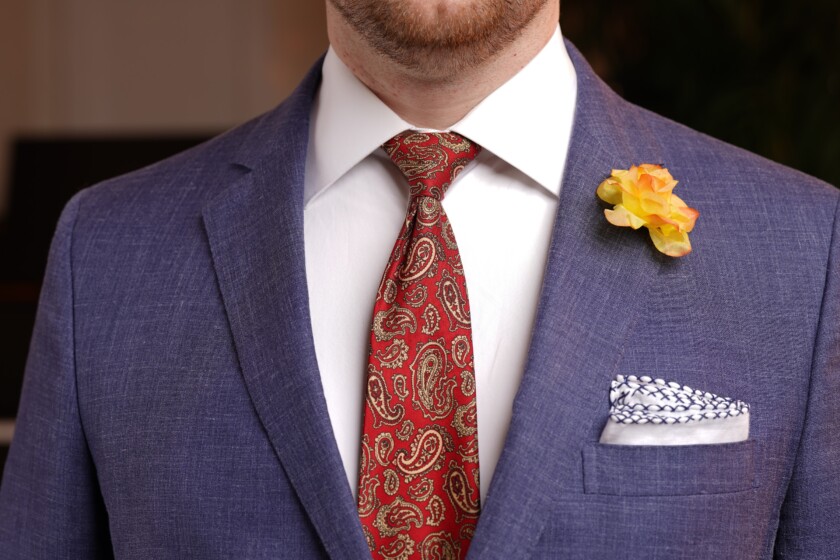
Harmony is not always what we look for in an outfit. Sometimes the occasion allows for more contrast, and our mood may call for a bit of flamboyance, especially in the warm months. In this case, it is advisable to add color to create contrast. Even in businesswear, suits traditionally in sober grays or blues may be a bit lighter in spring and summer. Contrast is often created by using a tie in a slightly more striking color on a white, light blue, or pink shirt or a shirt with multi-color checks or stripes with a solid tie that picks out one of the colors in the shirt’s pattern. It can also be fun to wear socks that repeat the color of the tie or one of the shirt’s colors. For the bold, a variety of solid colors can be also employed to create visual contrast.
Learn how to pair fiery red with stately gray!
Principle #3: Use the color wheel to select complementary colors
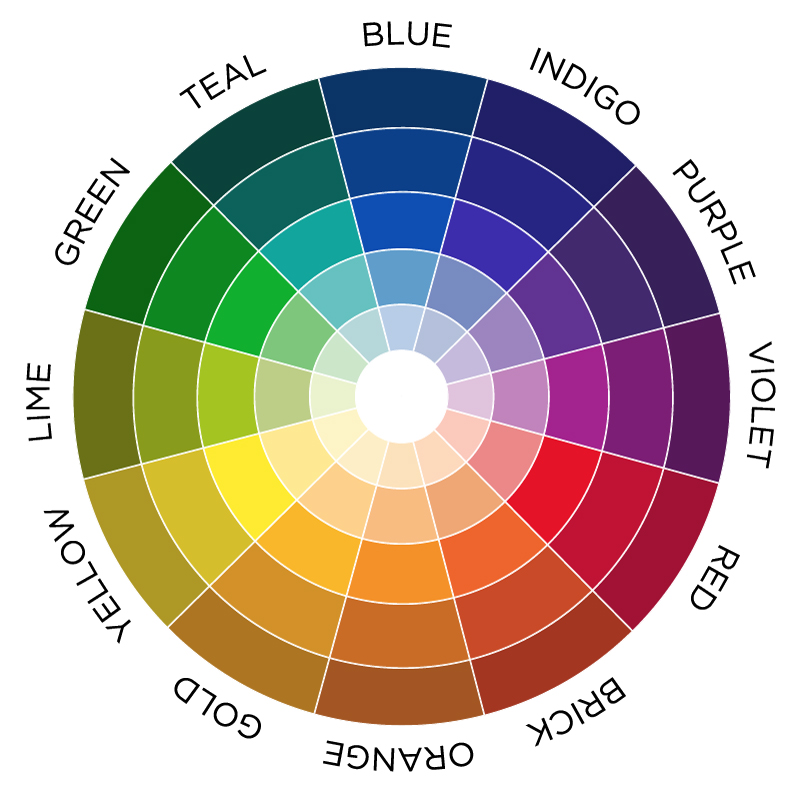
It can be difficult to work with color if you find it challenging to envision the whole outfit. If this is the case for you, you can employ a color wheel. It may seem like a strange idea at first to use this tool that reminds us of art lessons at school, but it is really very helpful and easy to use because the colors that lie opposite in this wheel are complementary. This means that they enhance each other perfectly and look good together. The color wheel will show you, that yellow looks great with purple, green with red, and blue with orange. You should not be surprised to learn that these complementary colors were selected for use in many historic club and regimental striped ties
Ride the Color Wheel with Fort Belvedere!
Determining Typical Warm-Weather Patterns
Picking Perfect Patterns
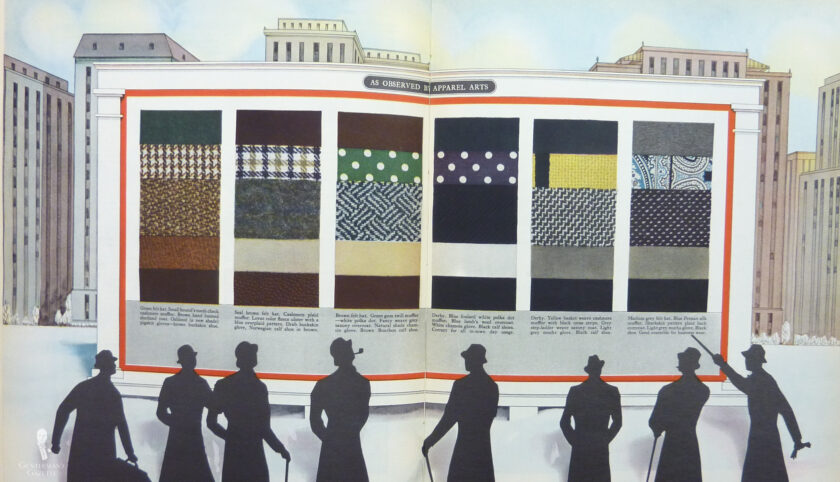
When it comes to selecting patterns for warm-weather ensembles, there are a few obvious choices with several more nuanced options.
Floral patterns, obviously evocative of the new blooms are spring, represent a fairly obvious choice. Broad stripes are another pattern commonly associated with the hot months because it is typical of hot-weather attire like a linen shirt or a seersucker suit.
With the proper styling, however, a wide variety of patterns in menswear can, in fact, be adapted to a warm-weather seasonal wardrobe. It is simply a matter of determining the correct color combinations and level of formality.
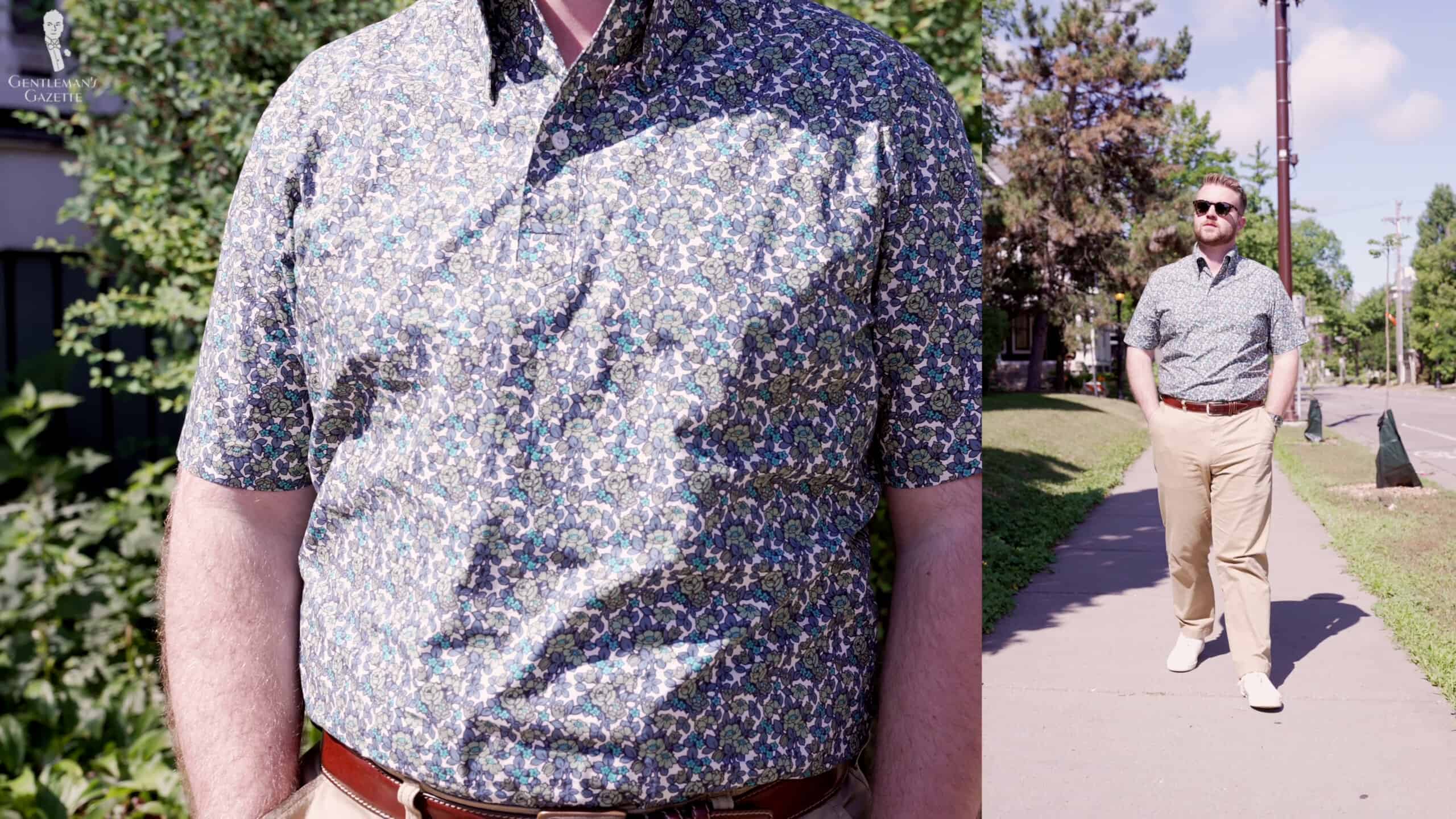
Florals
The most explicitly seasonal pattern we will be considering today, floral patterns prominently depict the flowers that abound during the warm months and are immediately associated with spring and summer. A relatively difficult pattern to wear outside of the hot months or tropical climes, florals are a casual but charming option for those eager to really embrace what makes these seasons unique.
Are florals right for you?
Shop the original florals with Fort Belvedere boutonnieres!

Yellow Dandelion
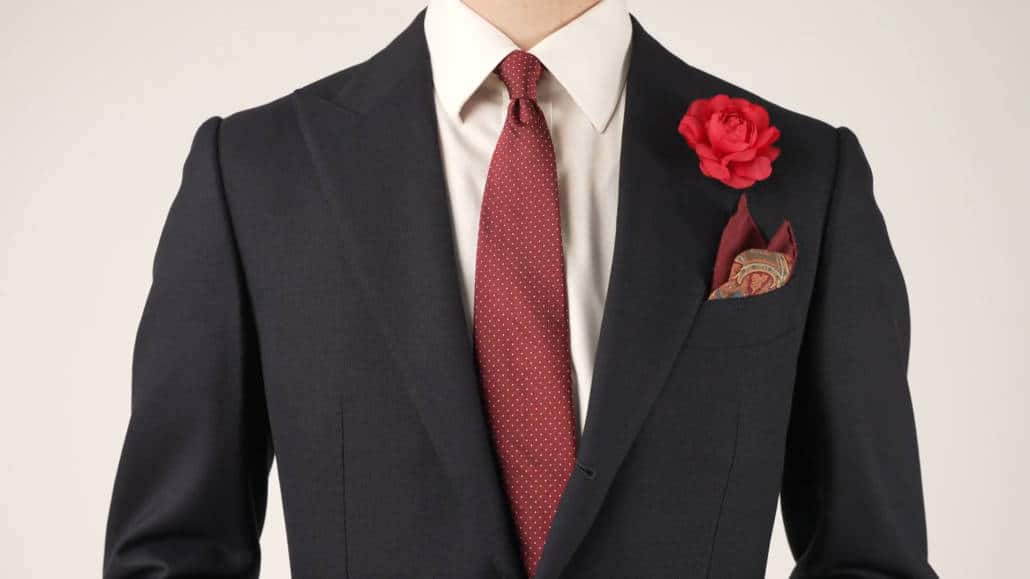
Red Camellia
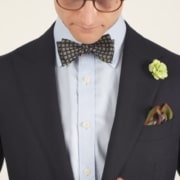
Green Carnation
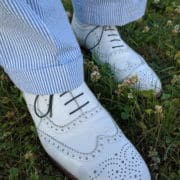
Stripes
One of the most versatile patterns in menswear, stripes have a natural association with spring and summer in the form of iconic menswear items like rowing blazers or cotton shirts. The introduction of warm-weather colors is the easiest way to make stripes suitable for spring and summer, but because of these seasons’ more casual natures, broader stripes are another way to add seasonality to striped garments.
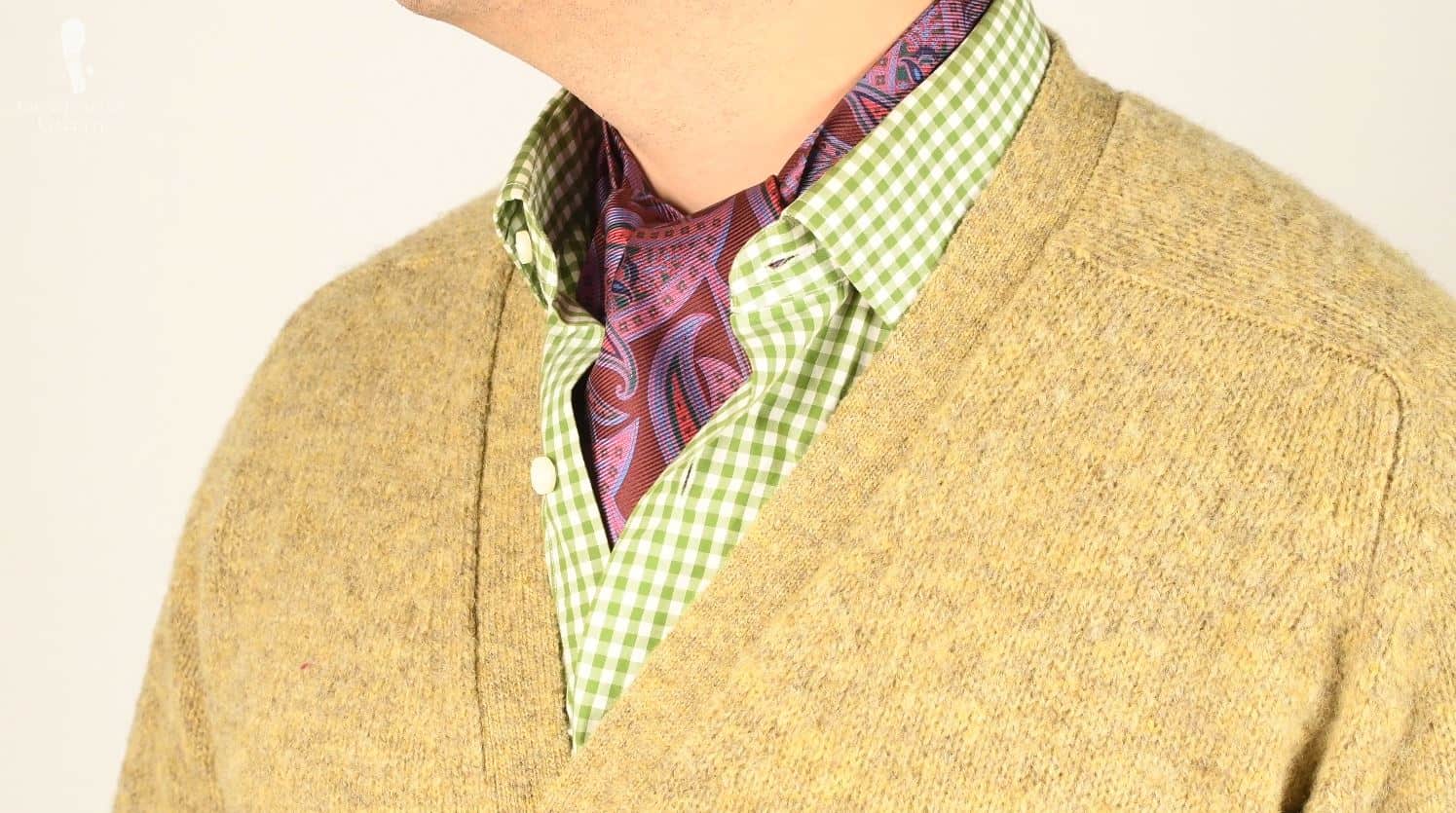
Paisleys
Based on an ancient Persian motif, paisley designs are reminiscent of a floral pattern but, thanks to their more abstract appearance, tend to be more formal and versatile. Paisley can be worn year-round, but for a look that is explicitly seasonal, opt for more oversized paisley with bolder, spring-and-summer colors. The results will be both more casual and more exuberant, and, therefore, better suited to the season.
Find multiple paisley accessories at Fort Belvedere!
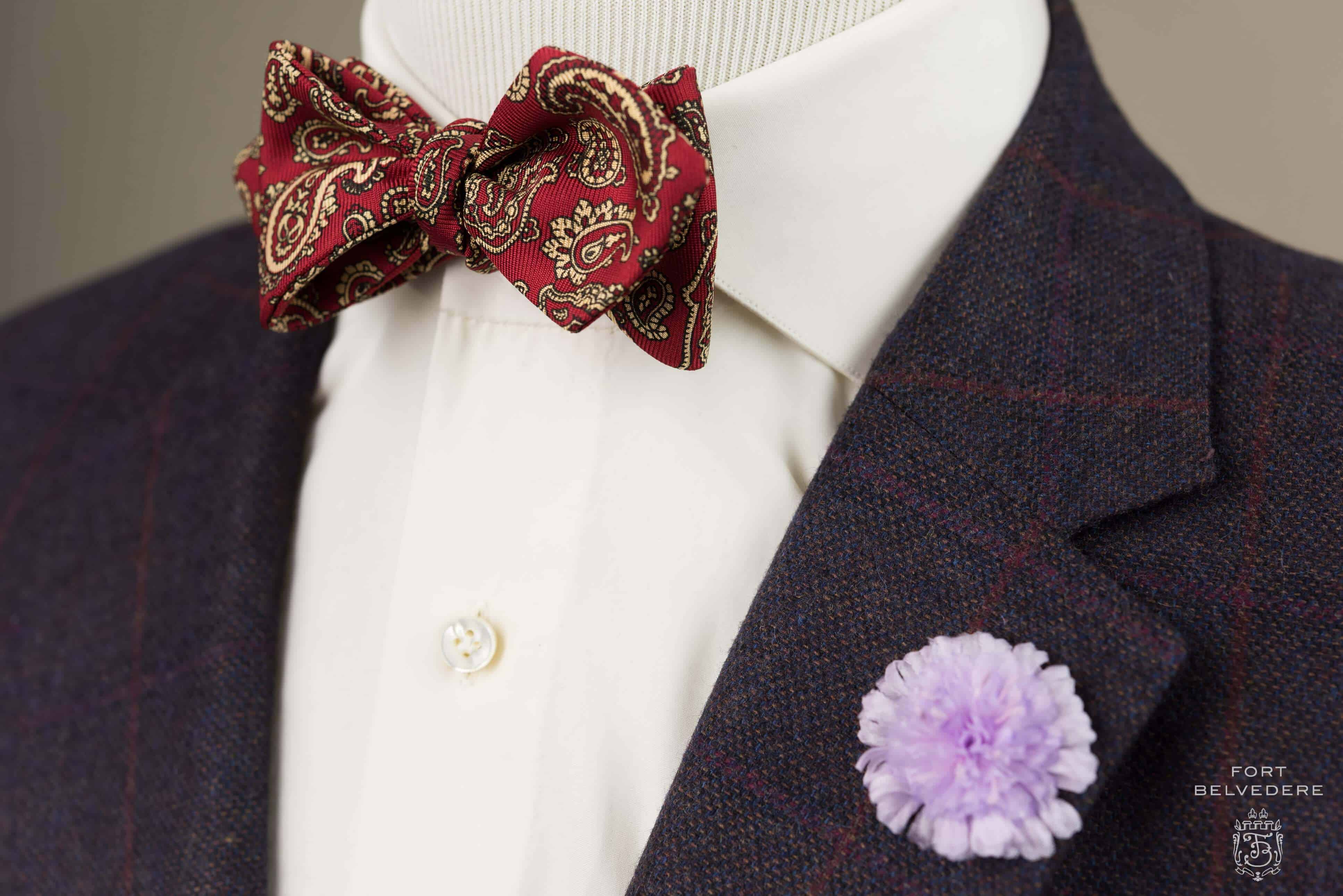
Paisley Bow Ties!
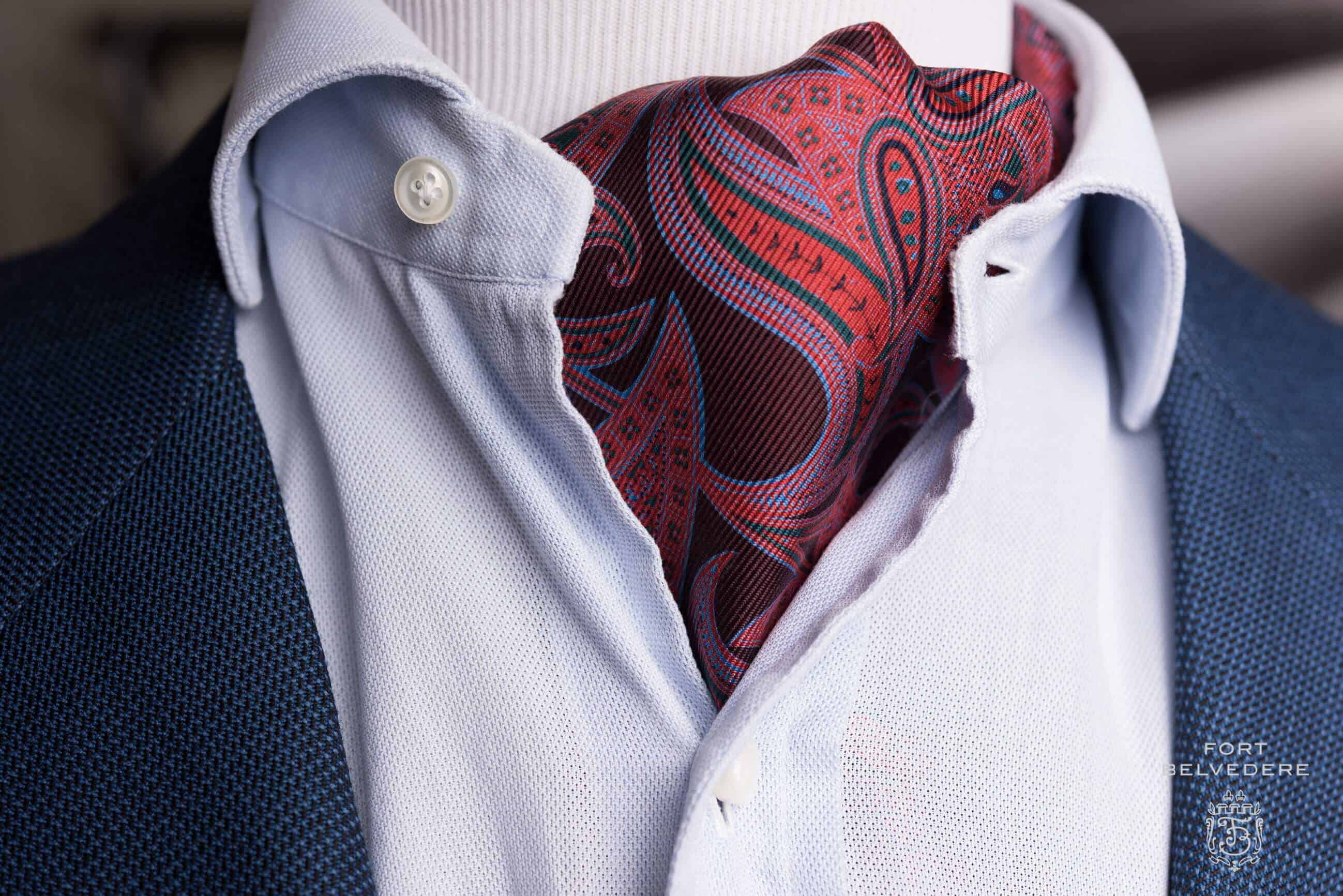
Paisley Ascots!
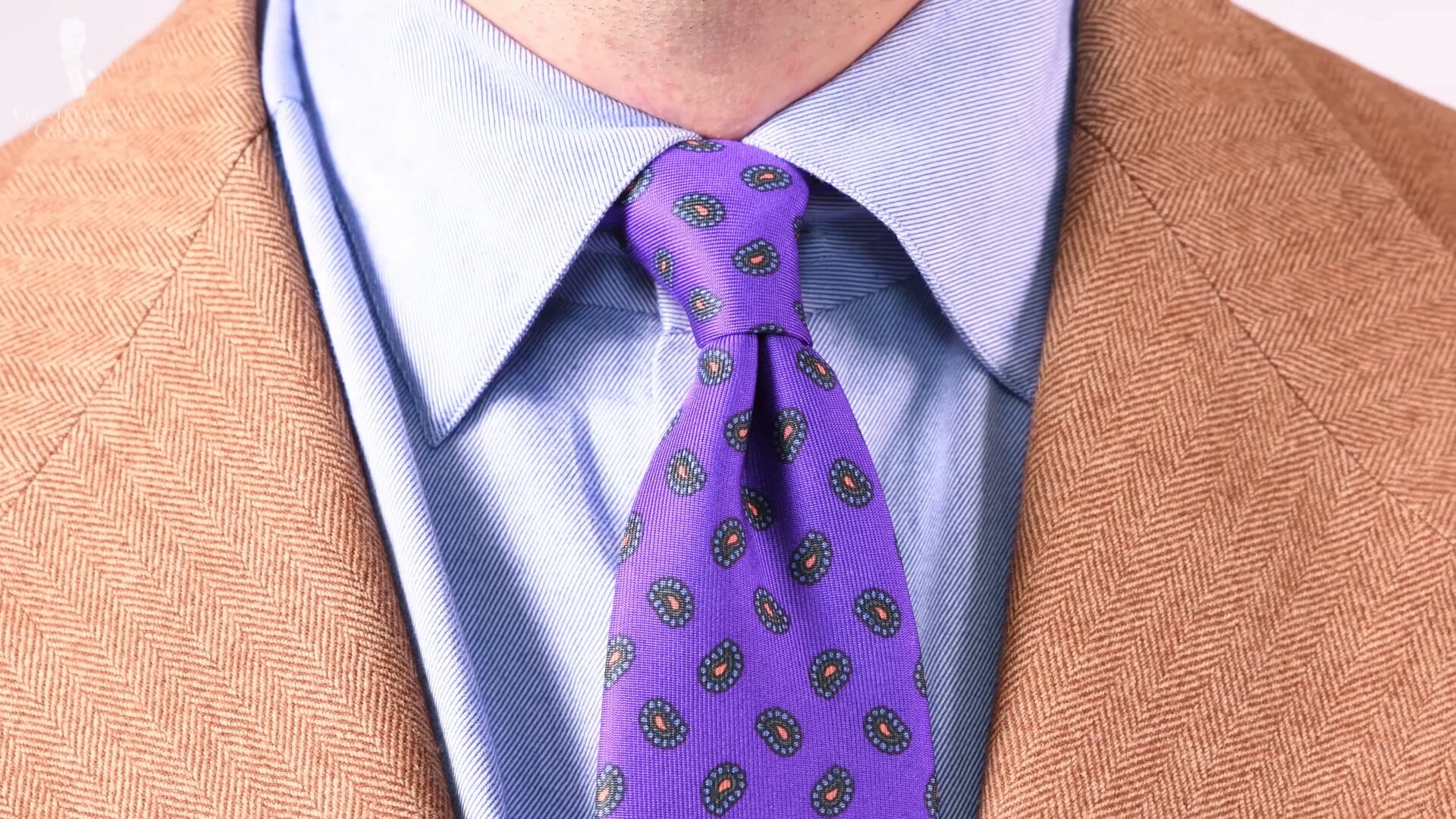
Paisley Neckties!
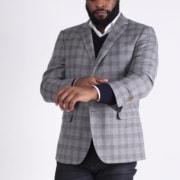
Checks & Windowpanes
Similar to stripes, checks and windowpanes can be worn all year, but minor variations, primarily in the colors employed and the size of the pattern, can make them appear more explicitly springy or summery. High-contrast warm-weather colors, in particular, are a great way to employ these patterns with maximum seasonal pop.
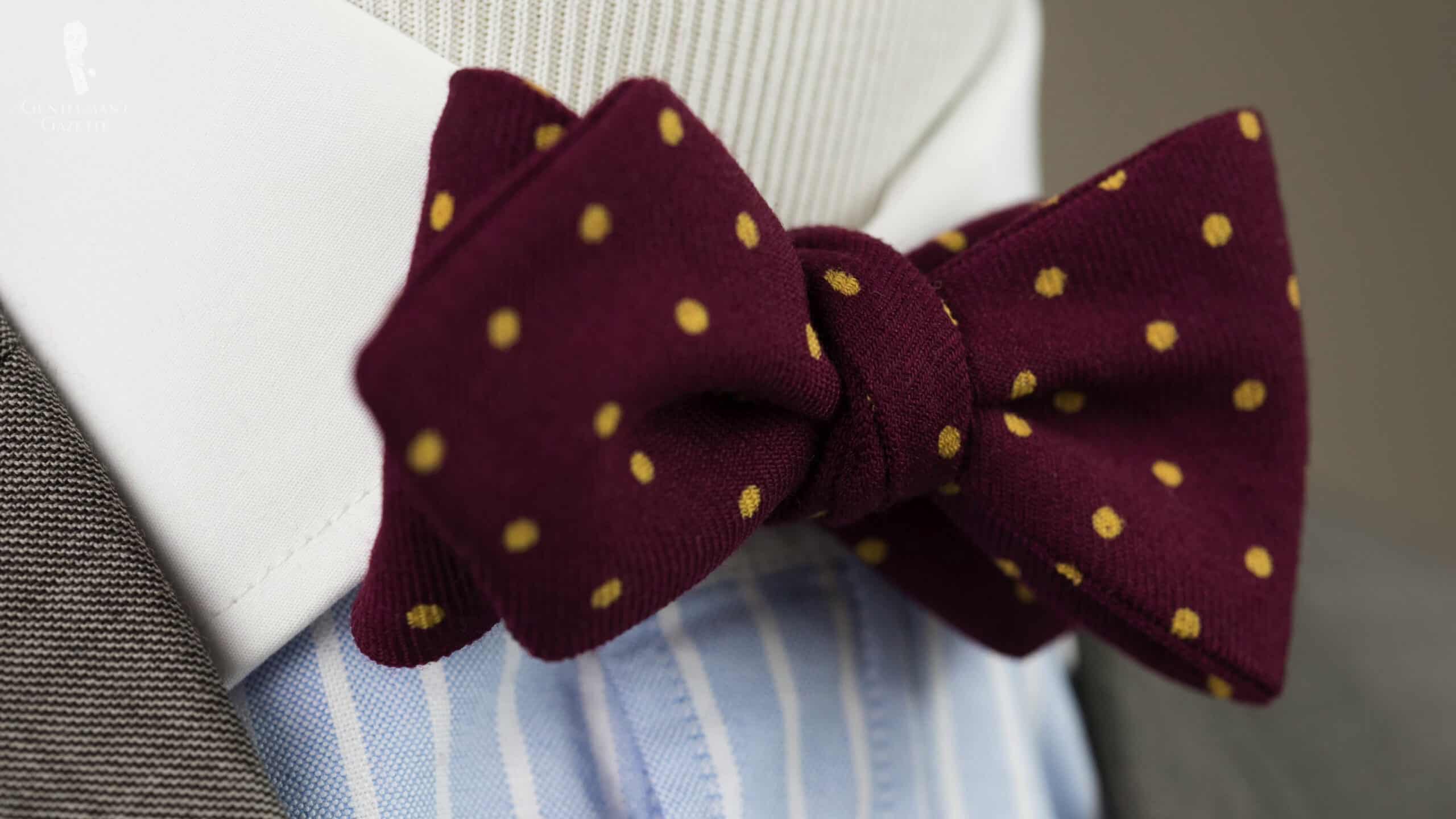
Polka Dots
One of the most underutilized patterns in contemporary menswear, polka dots were once common in articles for all seasons at all formality levels. For a look typical of spring and summer, employ larger polka dots in high-contrast warm-weather colors that capture the spirited whimsy that this pattern, when worn casually, entails.
Dance the polka with Fort Belvedere!
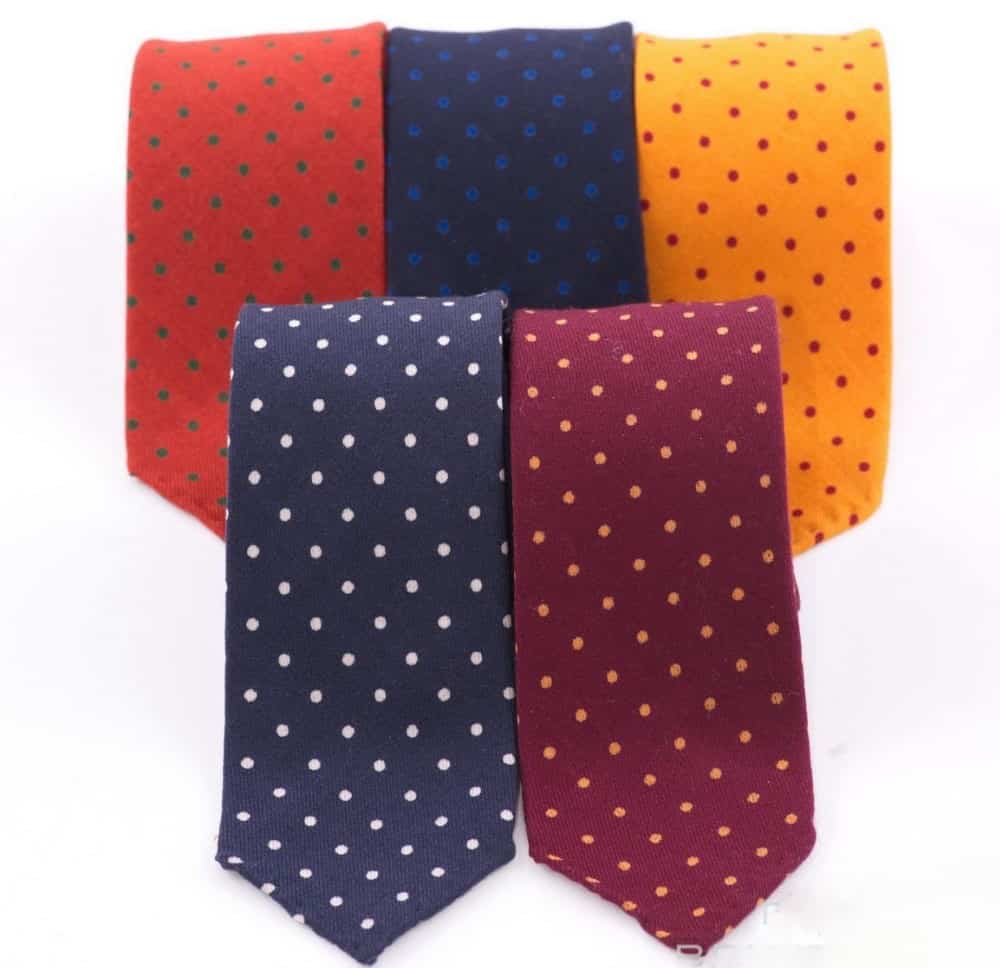
Neckties!
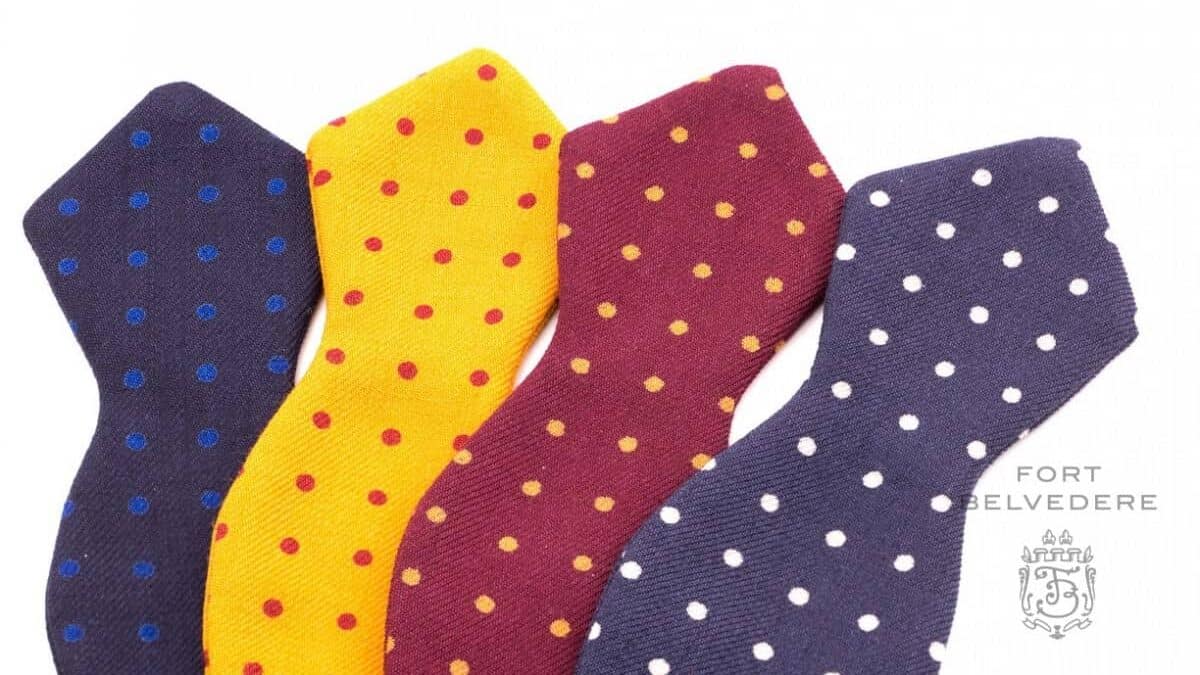
Bow Ties!
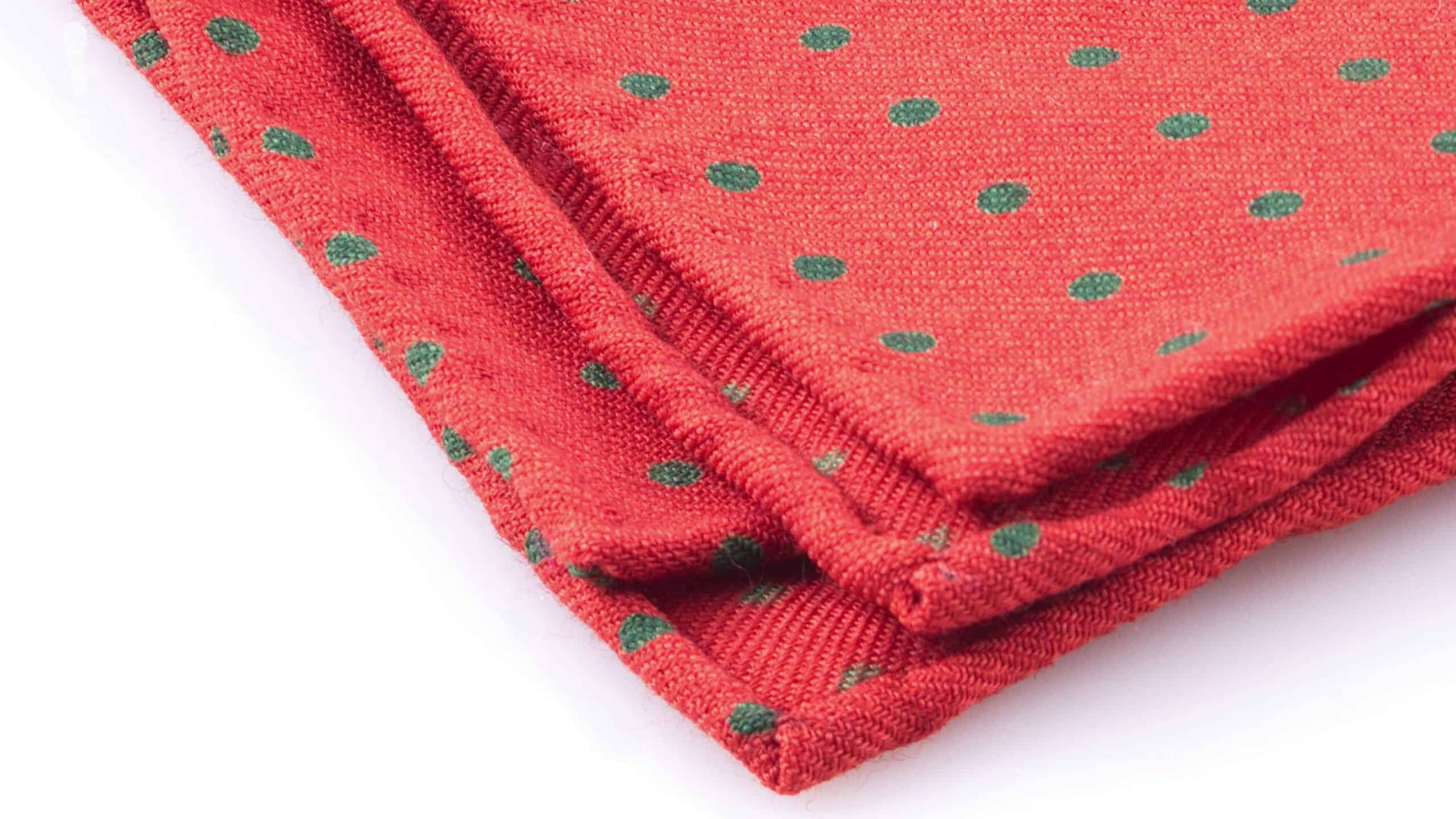
Pocket Squares!
The Principles of Pattern Matching
Pinpointing Patterned Perfection
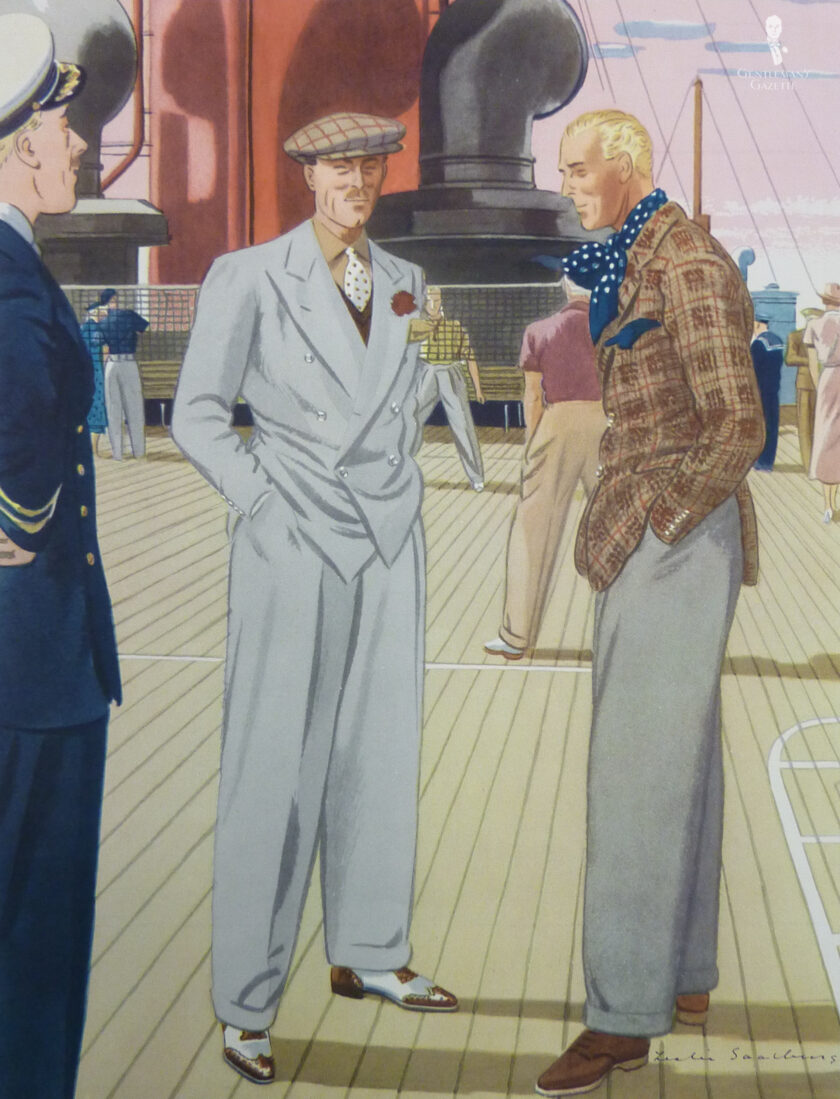
Having identified textures typical of spring and summer, we can now learn the critical principles of pattern matching. As we mentioned in regards to color, these principles are guidelines that will allow you to experiment and branch out without compromising on your personal style while providing effective “guardrails” against any avoidable sartorial mishaps.
Principle #1: Patterns should always differ in size
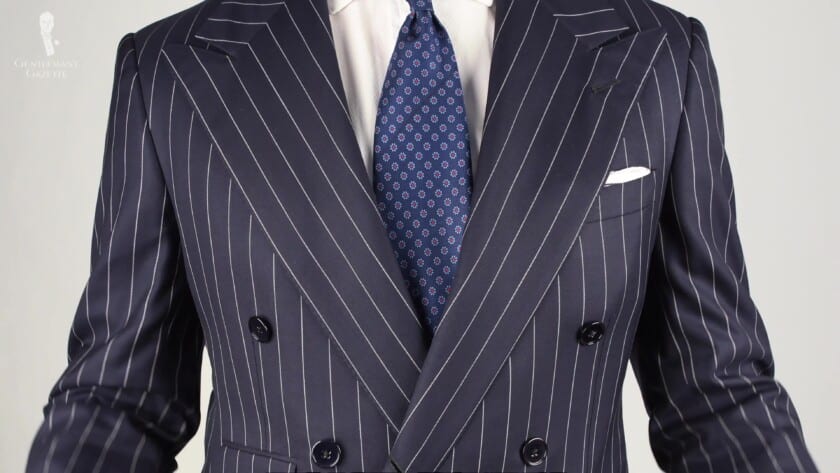
For maximum effect, patterns should always differ in size. A small gingham check should be matched with broad stripes or a big windowpane check. A tie with big polka dots should be worn with narrow pencil stripes.
These contrasts prevent the patterns from bleeding together, which can create an unpleasant, muddy experience. Obvious variations in size help distinguish the patterns from each other, allowing each to shine elegantly.
Master the common patterns of menswear!
Principle #2: Pair busy patterns with quiet patterns
To prevent your outfit from appearing too loud, busy patterns should be matched with quiet patterns. Busy patterns are dominated by the pattern with very little solid color between pattern repetitions, while quiet patterns have much more space and background between the pattern repetitions. For example, a busy paisley patterned tie with a shirt with fine stripes or a check with lots of space in between.
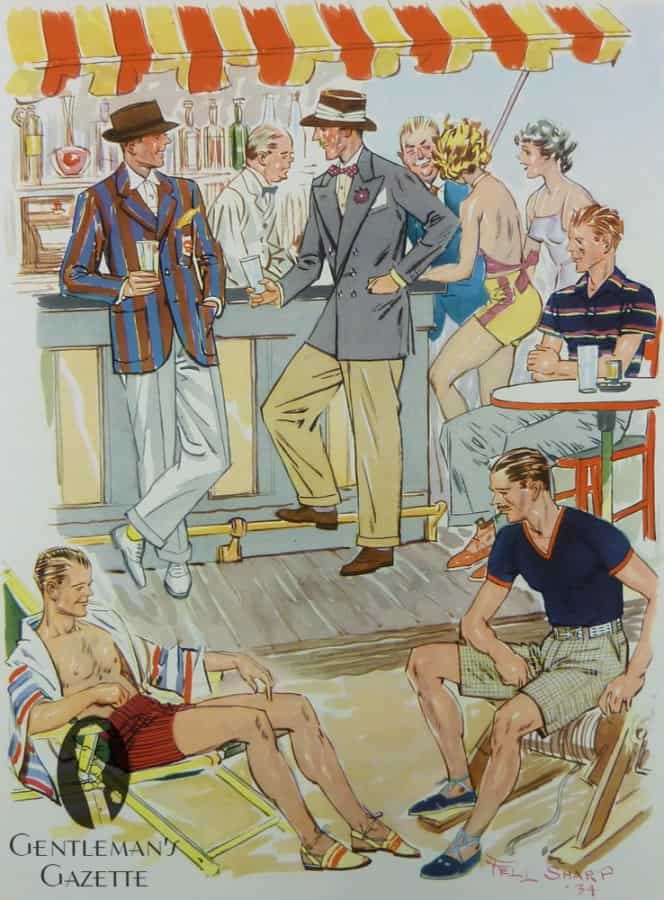
Principle #3: Consider pattern proximity
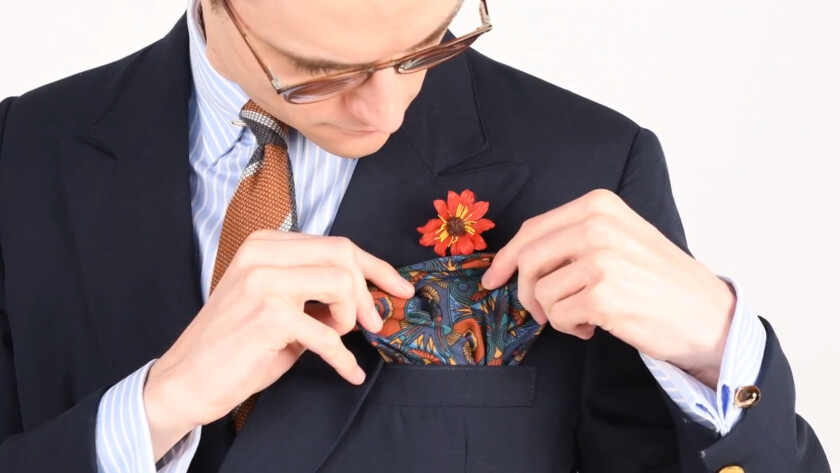
The two aforementioned principles apply most directly to patterns that lie next to each, as in a shirt and the tie, the jacket and the shirt, and the pocket square and the jacket. You, therefore, need to be less concerned about the interaction between the patterns on your shirt and pocket square, for instance, because they are not in immediate proximity and thus are not as noticeable together. It is important, however, that the pocket handkerchief has a pattern that differs in size from the suit’s pattern.
Testing Our Principles with Three Outfits
Consider These Examples
Having learned the basics and principles of exceptional spring and summer ensembles, let’s put our knowledge to the test by assembling three distinct outfits typical of the warm-weather seasons, with as wide a range of styling options and personalization oppurtunities as possible.
Outfit #1: Navy blazer with gray trousers
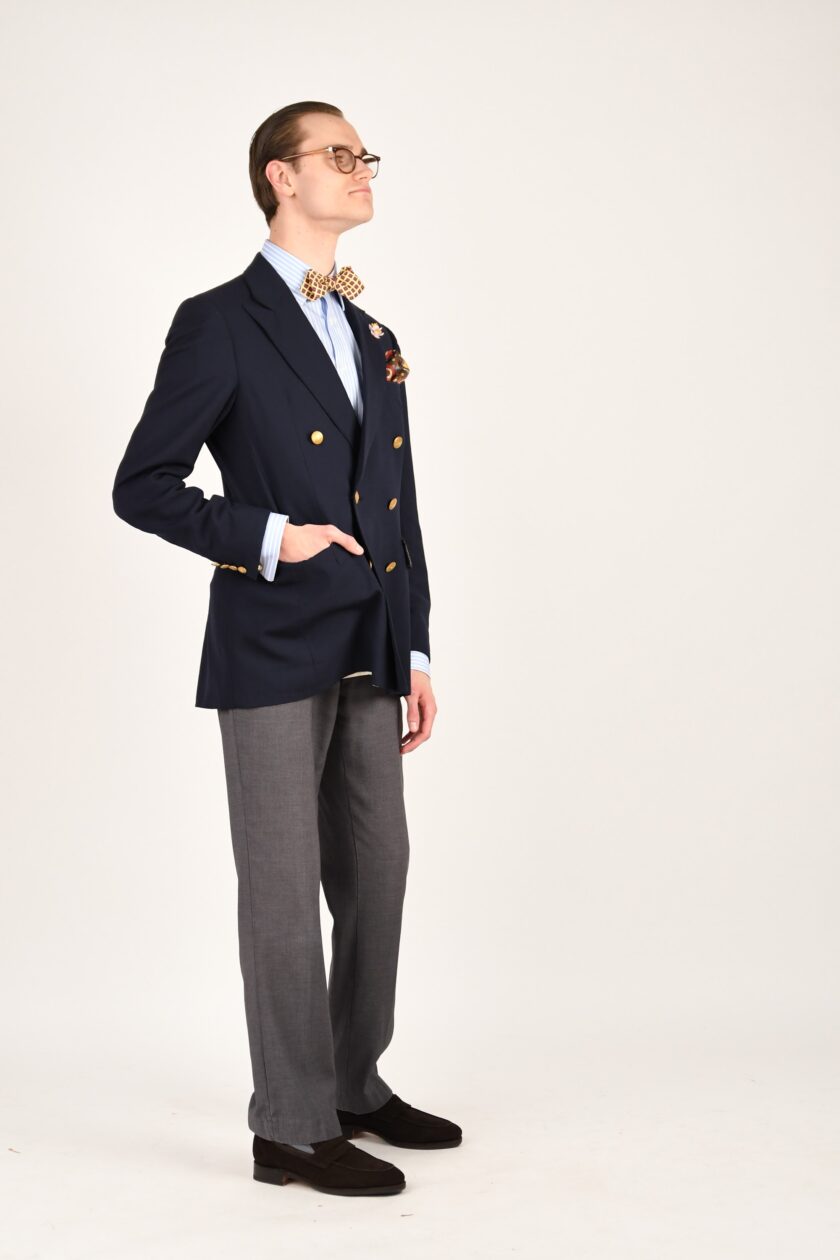
Let us begin with a standard in Classic Style: the double-breasted navy hopsack blazer with gilt buttons. Hopsack is a fairly open weave that allows the air to pass through and this ventilation is ideal for hot weather. Despite its sheerness, hopsack is a hardwearing, durable fabric that is ideal for regular wear. If the blazer is unlined or half-lined, it can easily be worn on very hot days.
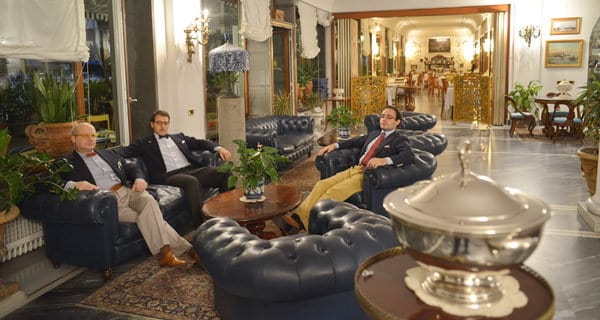
What could we choose to wear with this blazer in spring or summer?
Dark gray pants of light wool are the most formal choice. Solid navy and gray are the perfect backdrops for a number of spring colors. You could pick a pink shirt and match it with a patterned tie, including navy, red, or pink. The pocket square could be of white linen or red with pink and blue.
Learn how to pair blue and gray effortlessly!
Alternatively, you could choose a patterned shirt with lively multicolor stripes or checks and a solid tie. Knitted silk is available in various colors, or for a change, you could choose an unlined tie of shantung silk which has been very popular among style aficionados lately. If you are wearing loafers, you might want to wear colored or patterned over-the-calf socks picking up the color of the shirt or the tie.
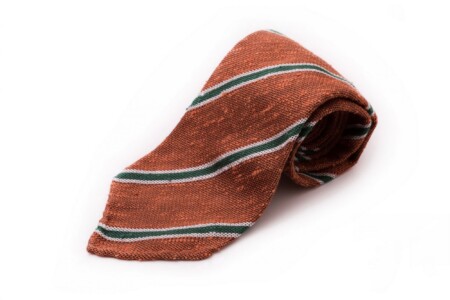
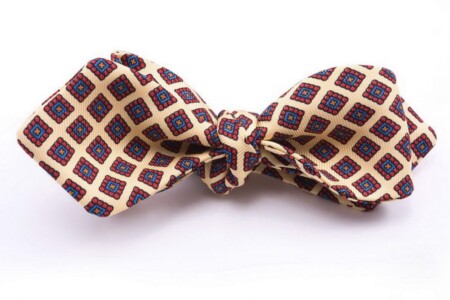
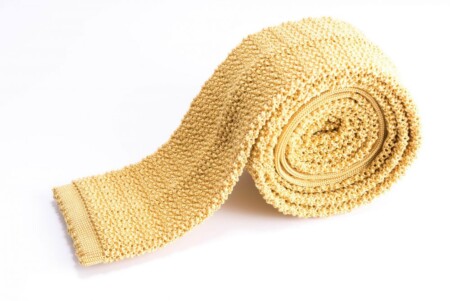
For a more casual mood, the same blazer would look completely different if you wear pink cotton slacks with it, a white linen shirt, and a bow tie in vivid colors. You could even consider spectator shoes in brown and white and a Panama hat. The resulting outfit would be a mixture of English summer wear and preppy style, perfect for a sunny day, no matter how you label the look. If pink slacks are a bit too eccentric for you a pair of cotton khaki chinos might be a better choice.
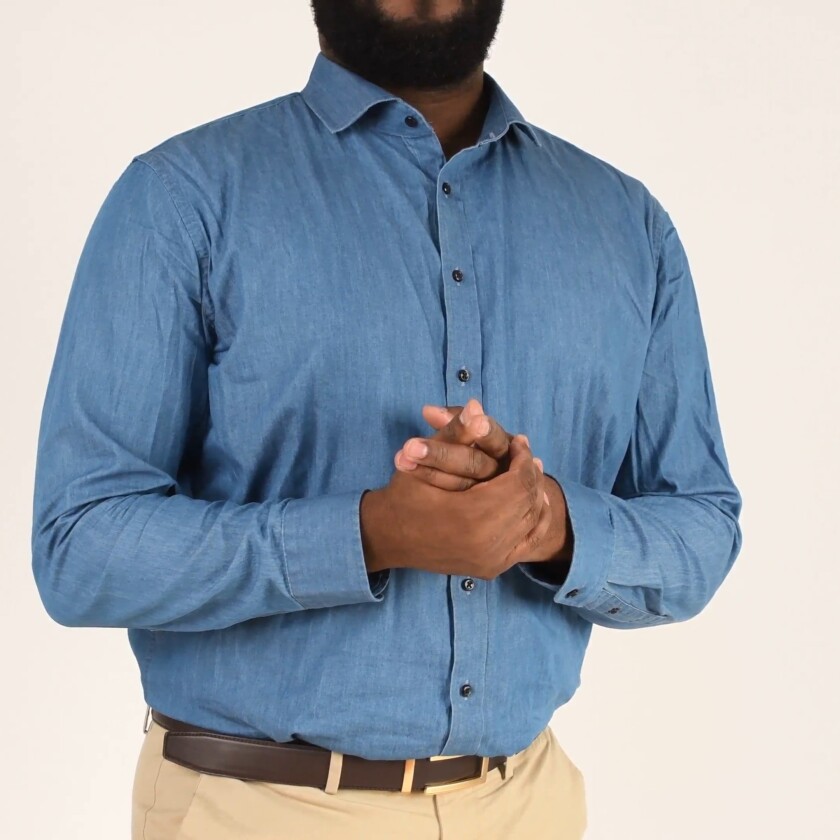
As another casual option, a fine denim dress shirt with a cutaway collar, a striped silk rep tie in orange and green, orange socks, and chestnut brown suede tassel loafers would create an outfit far from the standard blazer and chinos combo.
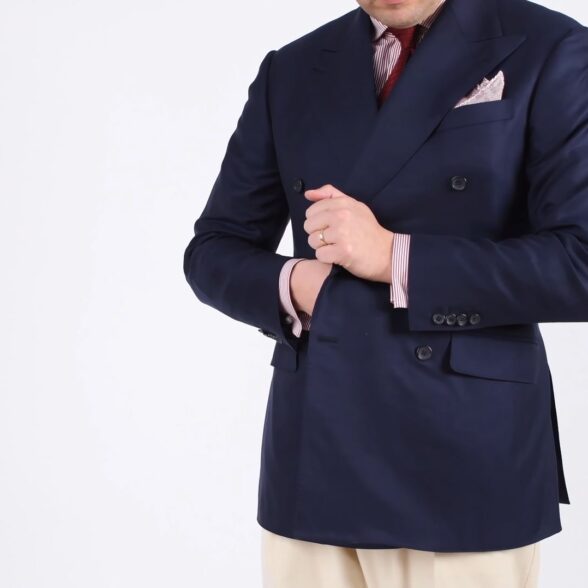
Understanding the Navy Blazer’s
Formality
Although a very chic and dignified garment, the blazer is typical of social functions and is thus not traditionally worn as business day wear. A blazer should, therefore, not be worn at the office, even in the spring and summer, although it’s a fantastic option for office social functions or business travel.
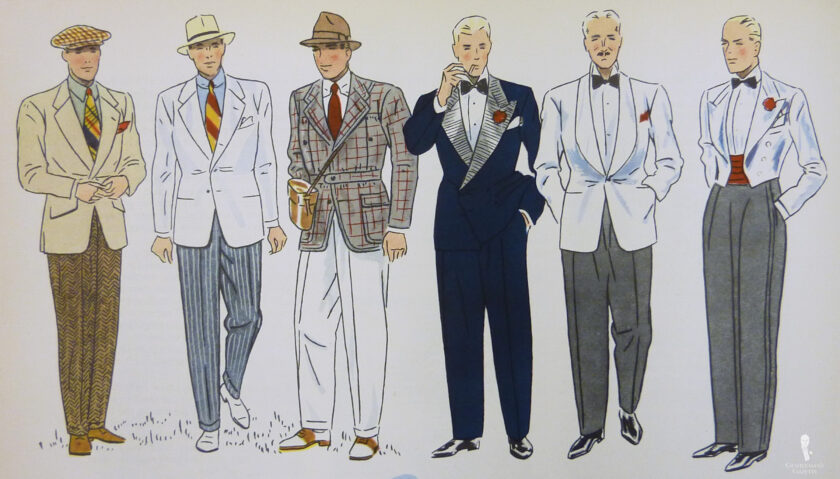
Outfit #2: Olive Green Jacket
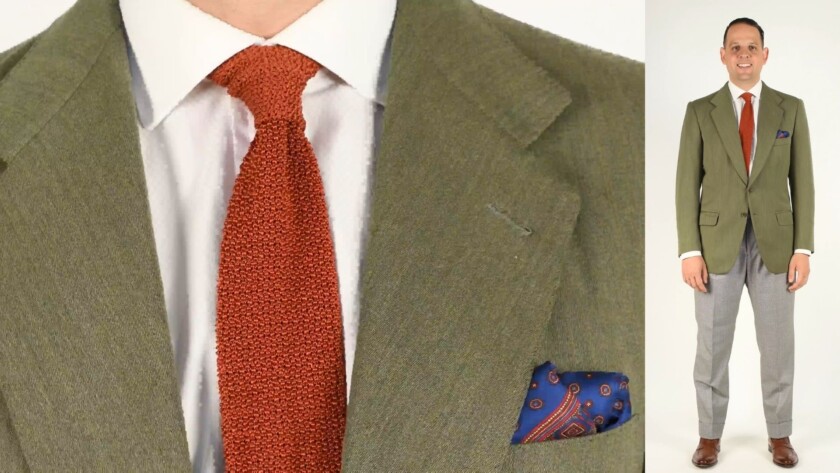
For our next garment, let us consider some looks built around another very basic item of the spring and summer wardrobe, the olive green cotton suit. While not seen as often as cotton suits in beige, tan, or sand, an olive suit is, in our opinion, a superlative option that looks better on most men, including fair men with pale skin and light blond hair who can appear washed out in many lighter warm-weather colors. In Italy, olive green is a standard color for cotton suits. Olive green also has the advantage that is darker than most brightly colored cotton suits and looks slightly more formal than beige, pairing well with brown and black shoes.
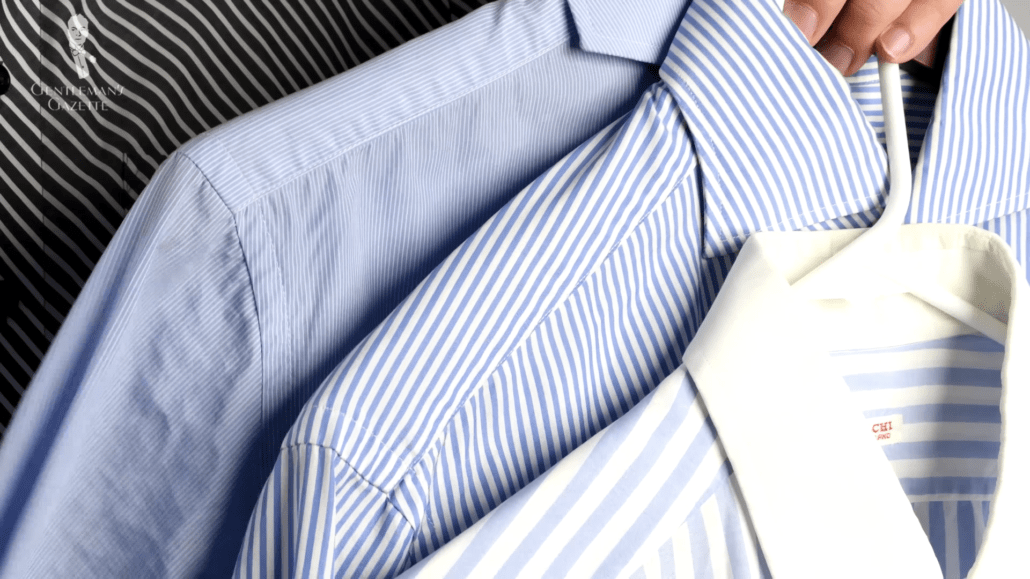
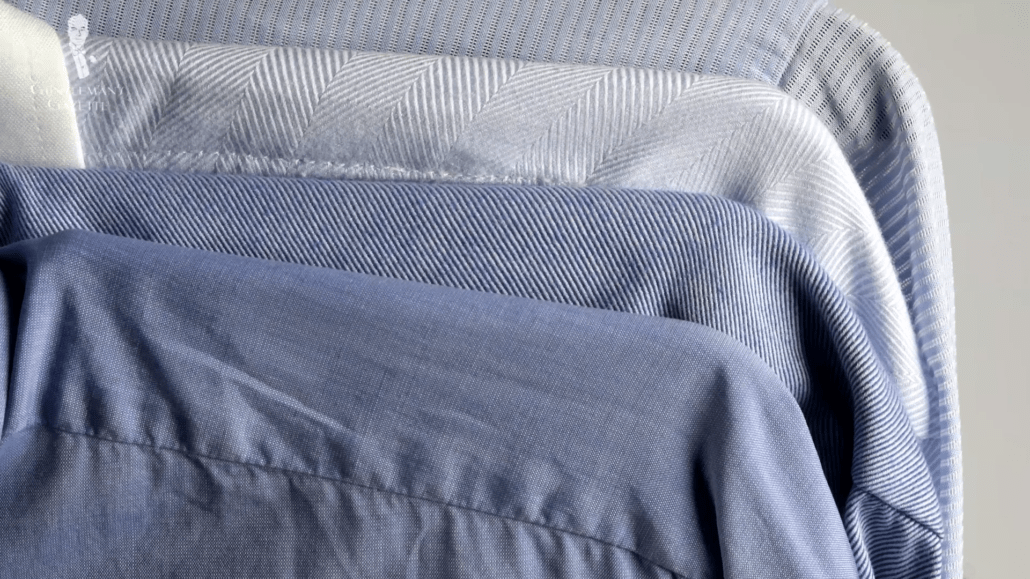
Be aware that any color too vibrant to go with the olive green, like neons, can overload the look; a dusty sold pink shirt or one with wide stripes of brown, and a navy shantung silk tie is an example of a more understated, sophisticated palette. With this look, you could wear black tassel loafers or brown suede lace-ups, depending on your personal taste and the occasion.
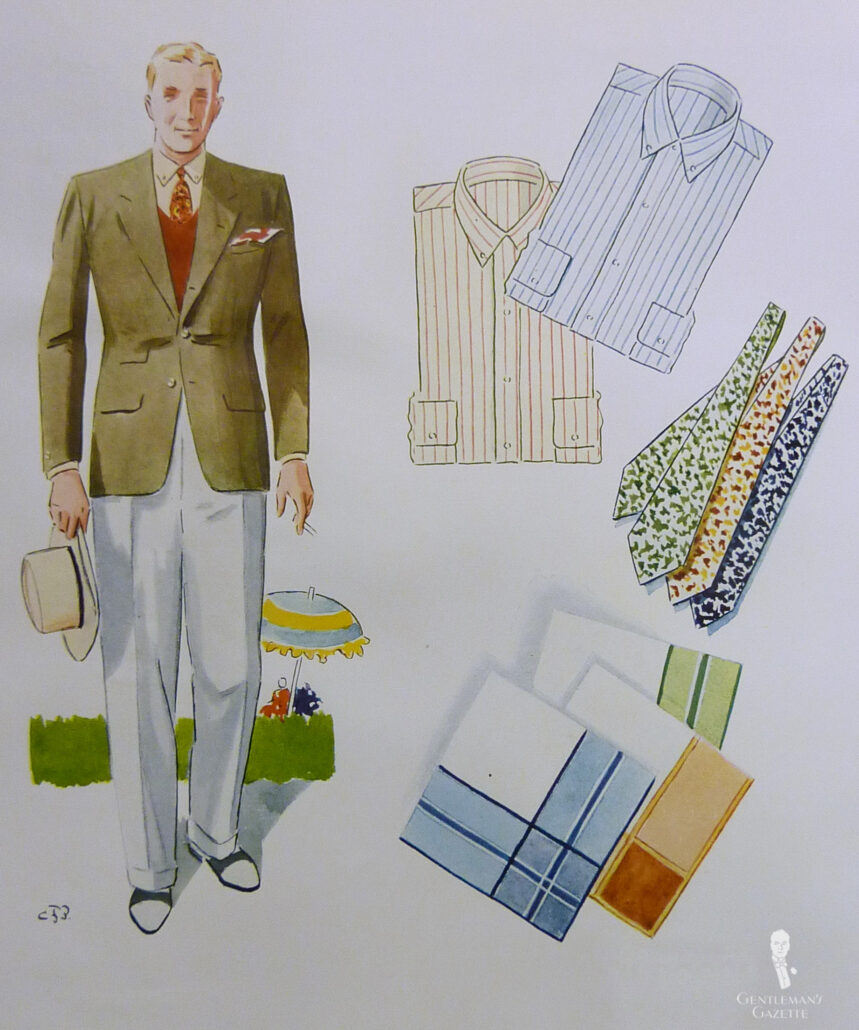
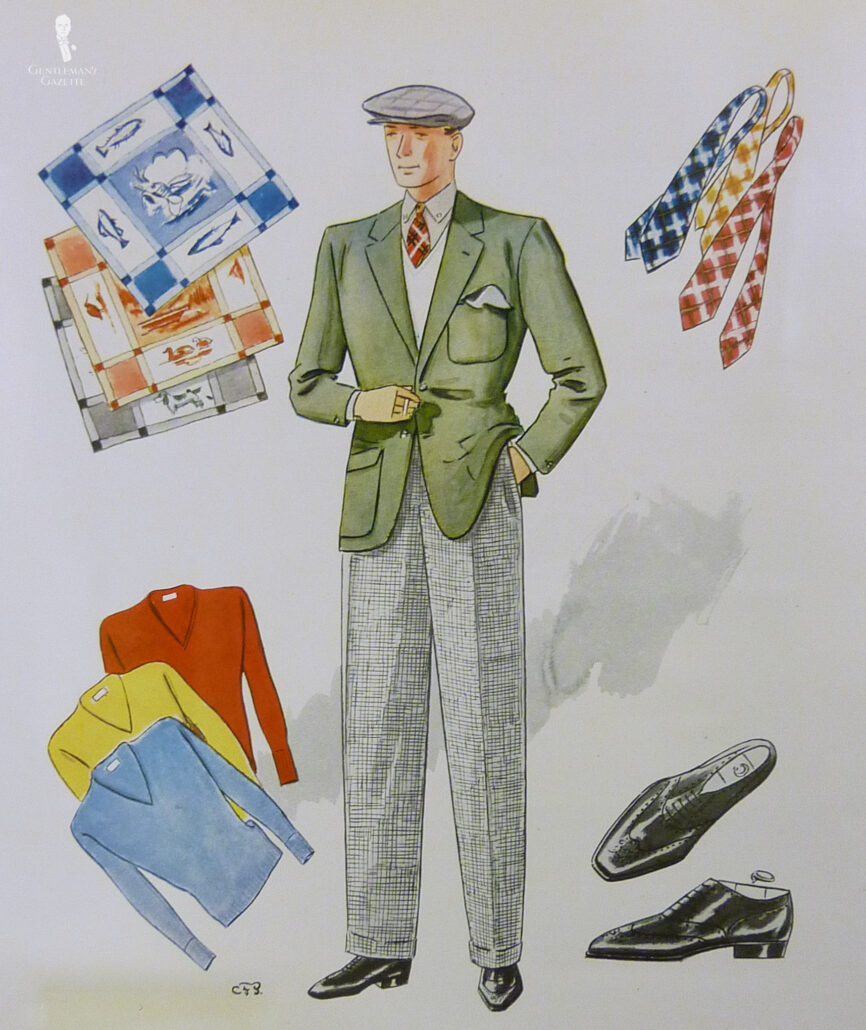
To harmonize with as many colors as possible, a white shirt would be an excellent option for this look. Tradition suggests white poplin, but white shirts in weaves with a bit more structure, like Oxford or even Giro Inglese offer greater visual interest.
Learn about shirt weaves and fabric
Because olive green and white are very unobtrusive colors, you can select wilder colors for your accessories, especially your neckwear. You could choose unlined printed silk ties in a number of patterns or motifs or an unlined linen tie, like one in coral red with white polka dots. A pocket square with greens, red, gold, and white could nicely complete the look.
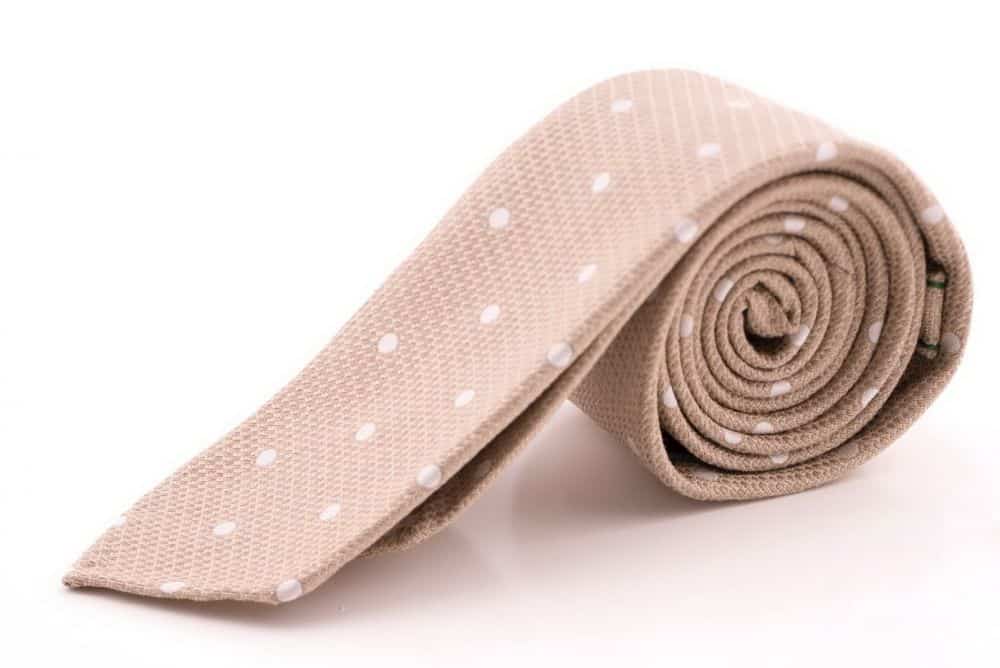
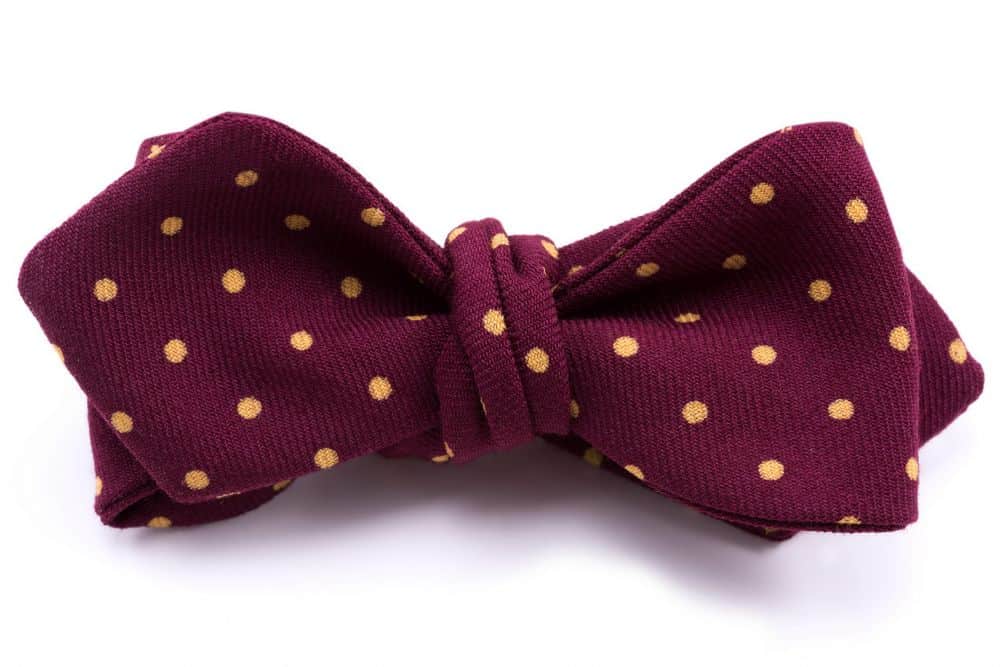
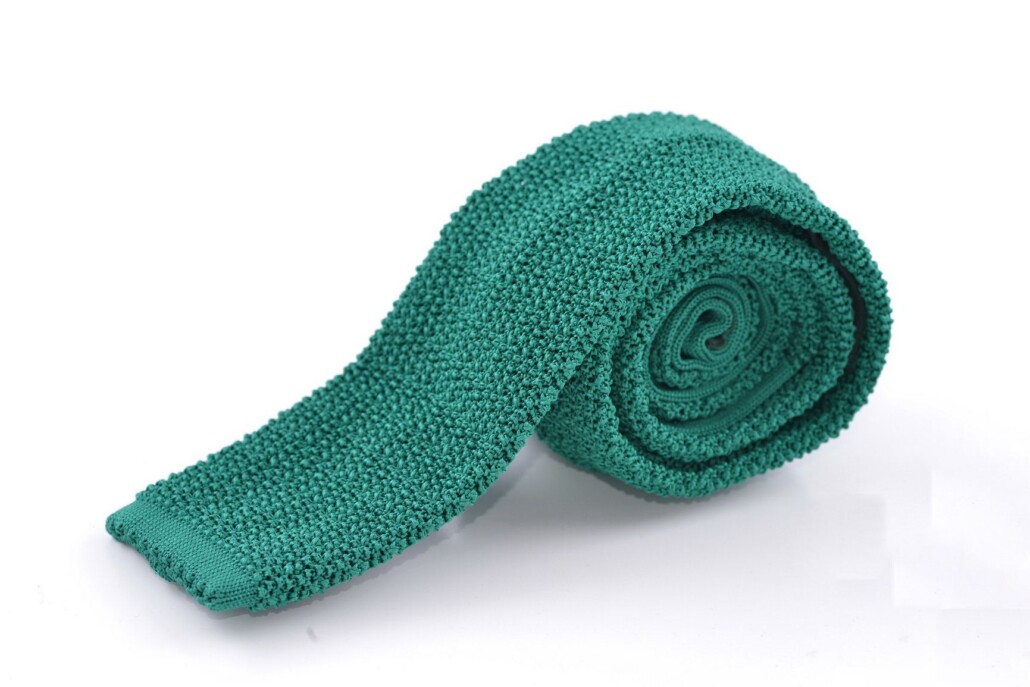
A third shirt option for the olive cotton suit is a check shirt with a white collar. The check could be composed of dark purple, green, and white, with a solid tie of knitted silk in gold or purple. Socks with colors that echo the tie would be particularly dapper. Because in this scenario we have opted for a busy shirt, a white linen handkerchief for the breast pocket with just some color on the hand-rolled edge will offer a pleasing visual respite.
Outfit #3: Vibrant Sport Coat
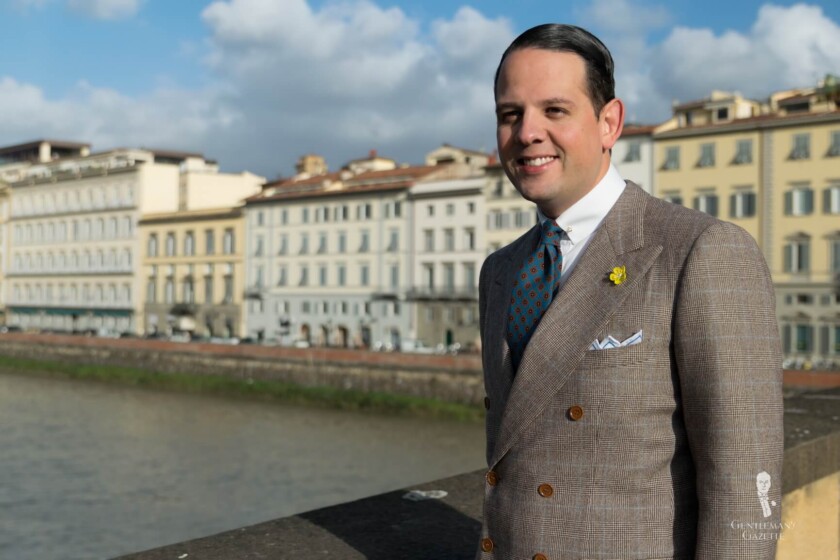
Let’s end our experiment with a more general jacket option: any lightweight sport coat in a fun spring or summer color and pattern. The cloth collections that weavers and cloth merchants put together for warm-weather contain a huge selection of checks and weaves in fine worsted wool, linen, silk, and cotton, many of them being very bright or even loud.
“To be truly elegant one should not be noticed”
Beau Brummell
A jacket made up of one of these will automatically attract a lot of attention to it which means that all other elements of the outfit will stand in its shadows. This has the advantage that you can use solid colors to great effect. A busy jacket will, however, limit the choice of patterns for ties and shirts.
Mastery blue and brown in menswear
A good option for you could be sport coats with simple, larger-scaled patterns in two colors. The two most versatile colors for a warm-weather sport coat are blue and brown. You could choose a mid-blue mixture of linen and silk with a broad brown overcheck or a mid-brown cloth with a broad overcheck of brown. The first example would look best with a white and pink shirt or with slightly darker blues like fine denim. The latter could look especially debonair because it works well with white, pink, yellow, and green and also with light blue, a versatile color for shirts and the easiest one to match with ties.
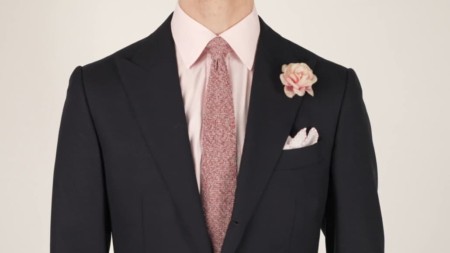
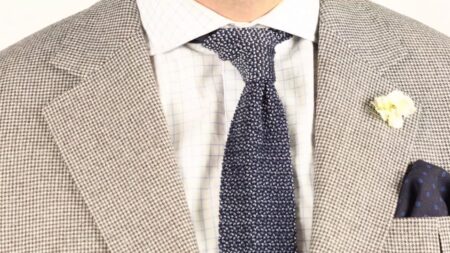
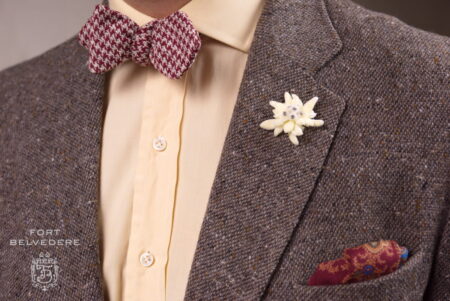
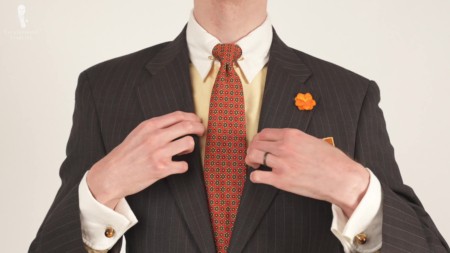
Let’s imagine we have found a brown sports coat with a bold overcheck of blue. You could take one of your Royal Oxford shirts and then throw in a tie of almost every type of pattern. The bold overcheck of the jacket will not collide with any sort of pattern or motif because it will always be larger in scale. You could even pick very busy patterns for the tie like houndstooth or Macclesfield neats. Of course, a solid tie would also be good.
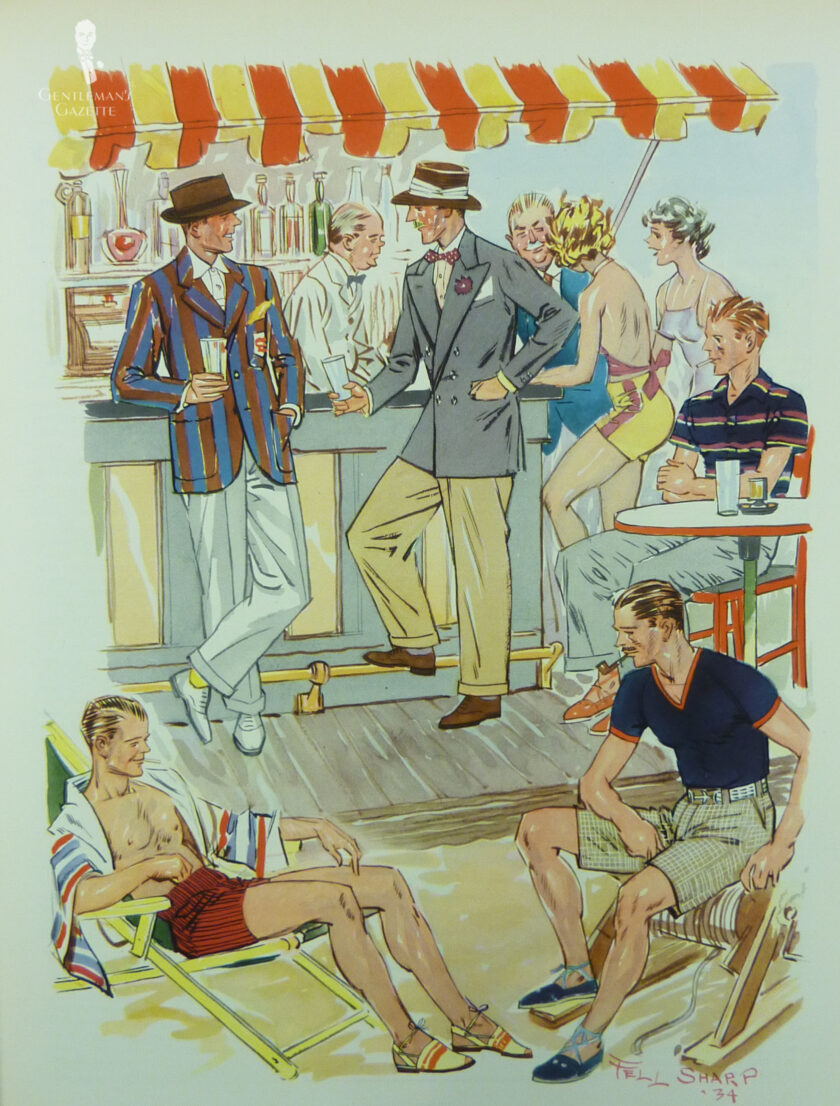
Simple matches are seldom a bad choice because they will not stand out and you won’t quickly become overwhelmed by them. Our imagined sport coat would also pair well with wool pants in gray, brown, and beige and cotton pants in dark brown, navy, or even colors like orange or pale green. The beauty of this type of sport coat lies in its versatility. For a Continental look, consider gray wool trousers, a denim shirt with a cutaway collar, and a sand-colored linen tie. Or for something more dandified, consider rust cotton pants, a pink shirt, and a green silk grenadine tie.
Conclusion
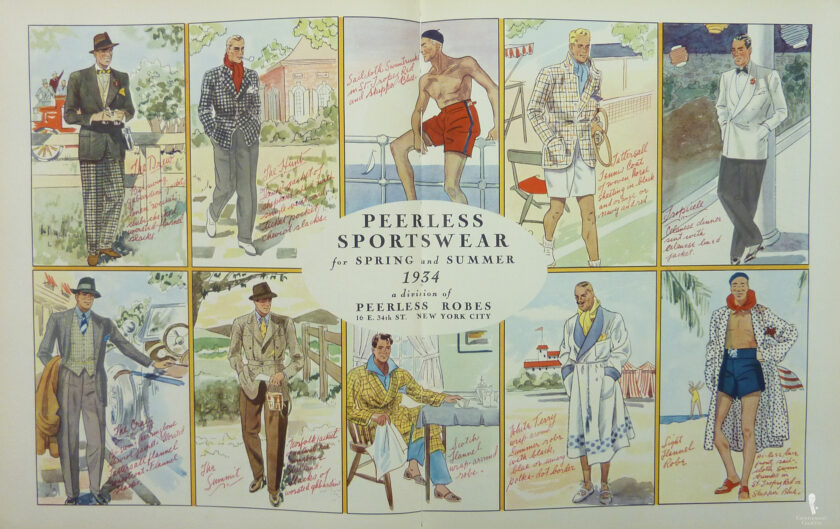
Matching colors and patterns for spring, summer, or any other season is great fun with the help of a few key color and pattern-matching principles. While there are several rules involved in this process, they exist primarily for your benefit and will help you turn your ingredients (the clothes in your closet) into something delicious and tasty (Memorable warm-weather ensembles!) But at the end of the day, never forget to use your intuition or imagination because the result may be much better than the one from the “recipes” in the books.
Elevate your spring ensembles with spring fragrances!
*Editor’s Note: This post was written by E.J. Daniels, adapted from an earlier version by the esteemed Bernhard Roetzel.
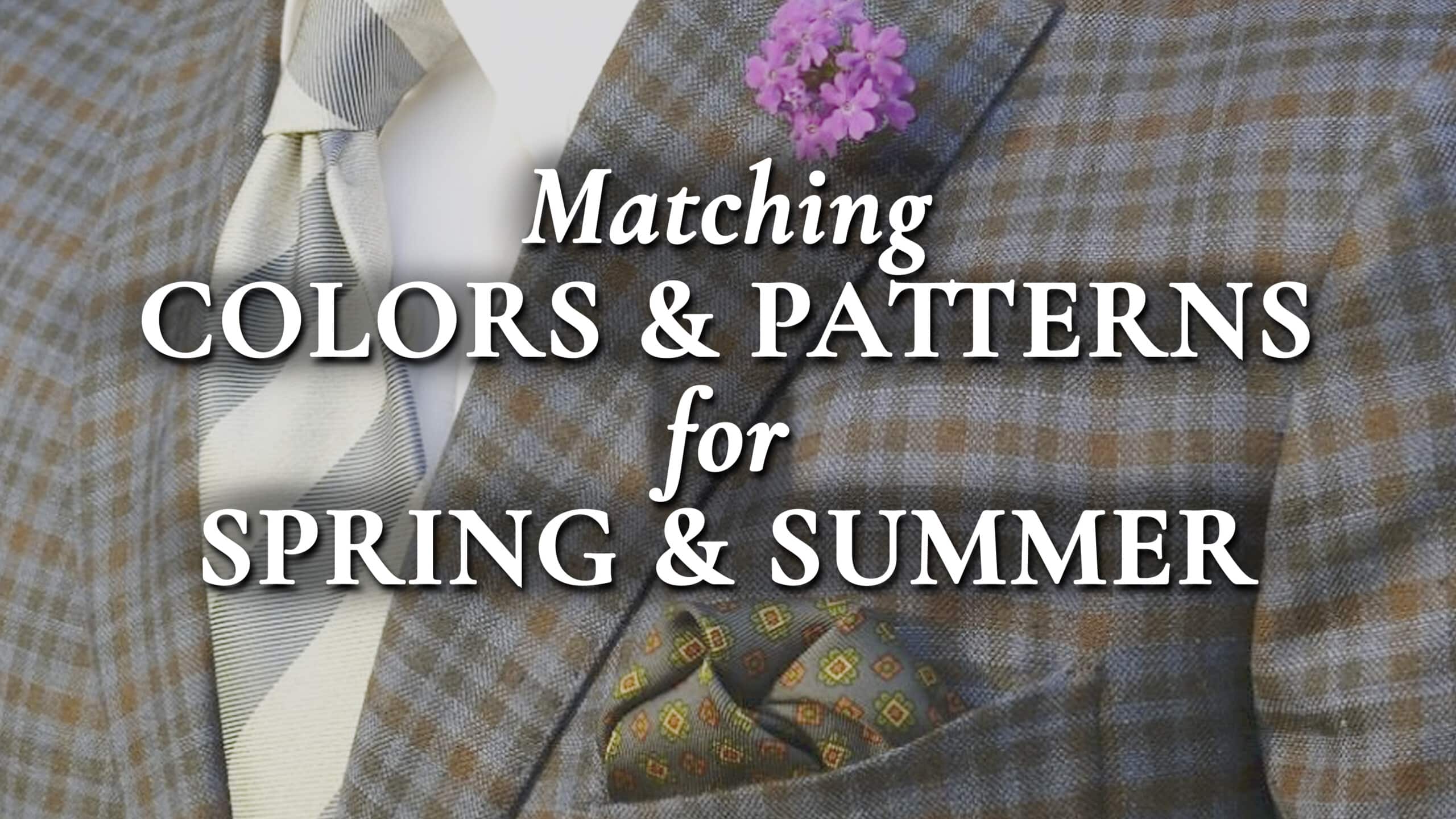
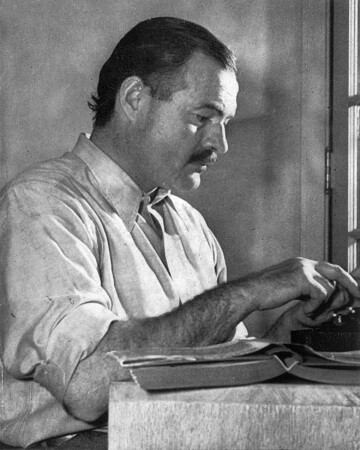


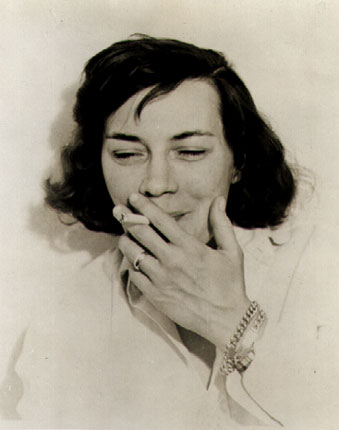

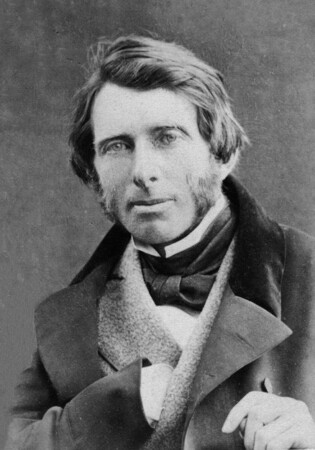
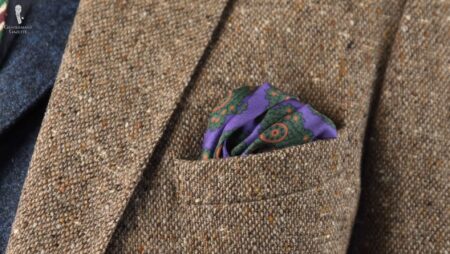
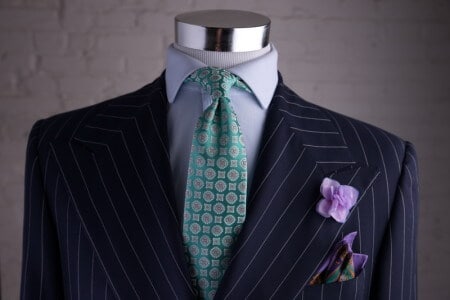
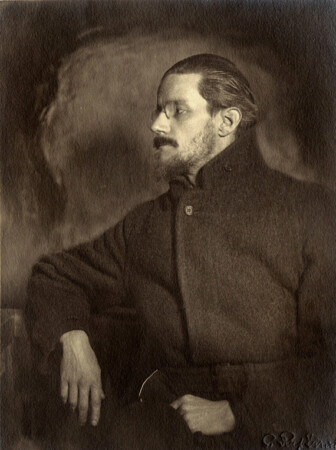
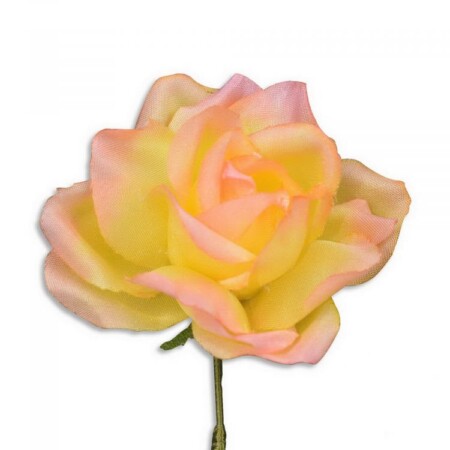
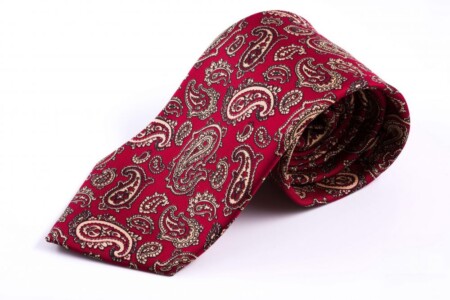
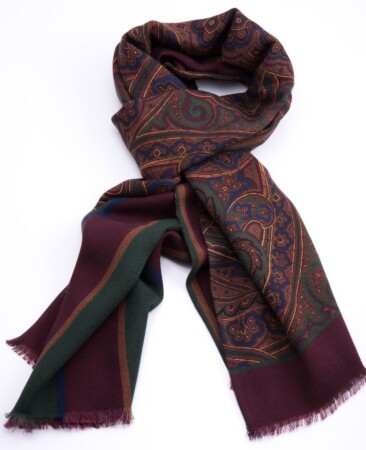
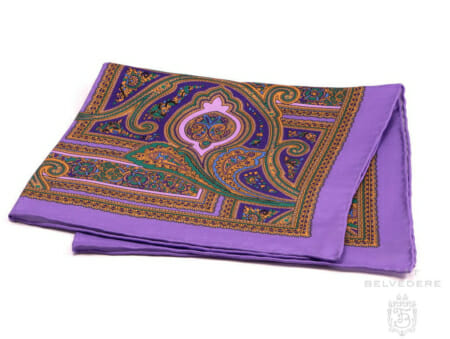
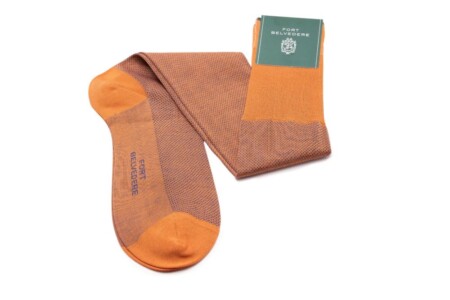
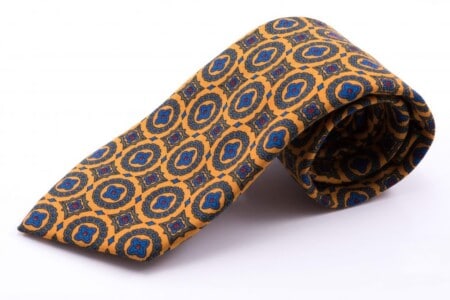
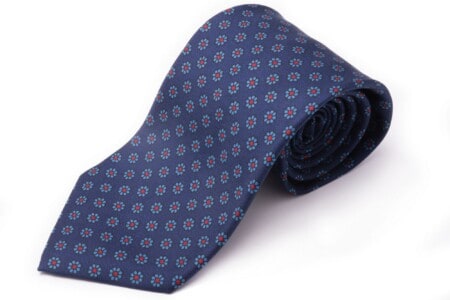
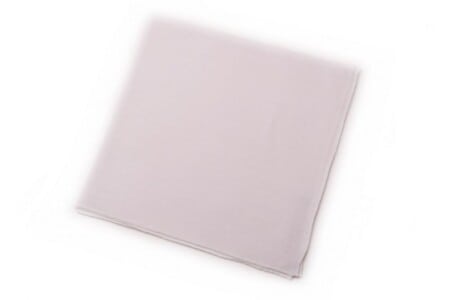
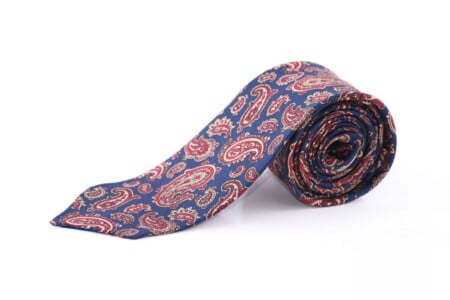
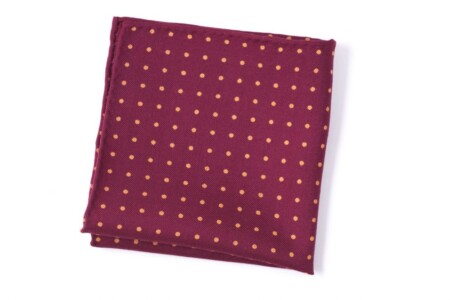
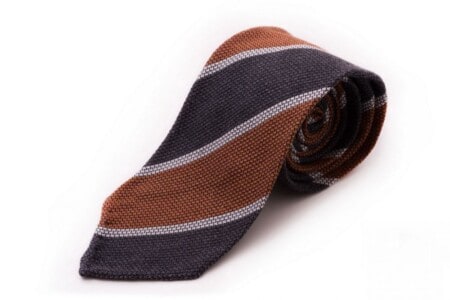
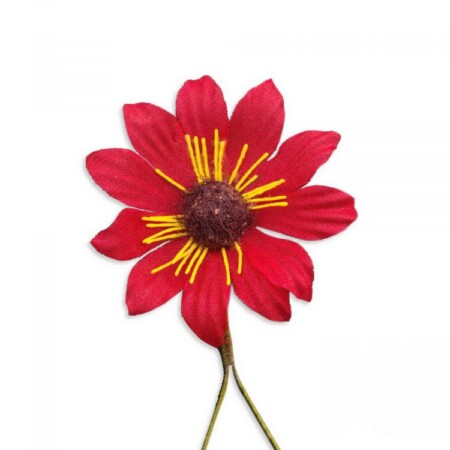
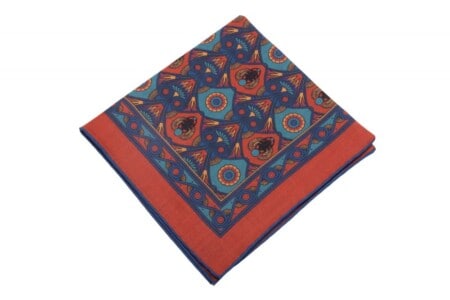
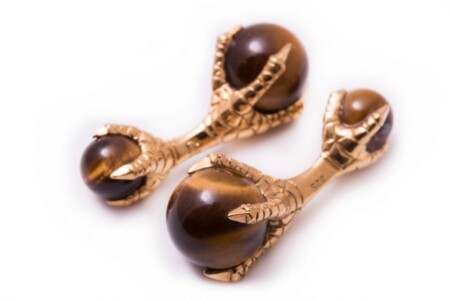

Can some one please tell me where in the world men would wear these types of clothing. I live in Canada and have not see this style. My Doctor wears jeans as does my accountant, dentist and banker. You would be hard pressed to see a CEO wear this or some one on TV? Mather of fact the local weather doesn’t wear a tie. I would love to dress this way, but would feel out of place in this City,
Move!
You can wear all of this, anywhere in the world if you have the confidence to do so. You have to be ok with being better dressed than others. When you generally compare yourself to others, you don’t always look at the average or bottom line, otherwise, you would strive to make minimum wage…
Sven is correct – you can wear most of these outfits in major cities around the world and not get a second glance. A few of the outfits shown are a bit “dandy” and overly colorful and would raise a few eyebrows. But they are there because the article is about patterns.
Best pattern combination pictures appear to be modeled by Sven. (Assuming headless shots are Sven, due to impeccable style).
They all look terribly camp styles. Overblown car crashes of colour. It is how we think of Americans in the UK ie just hopeless when it comes to style and class. True style is ALWAYS understated, subtle, never flaunted or in your face. Few know how to carry it off but when achieved it looks superb, elegant, timeless and knocks this pile of overpriced tat into a cocked hat.
You are quite superior indeed Chris ;) but the author is German, not American.
Greetings,
Mr. Bishop’s point is well-taken.
In line for a prescription, the technician asked, “Where do you work that you have to dress like that?” From her perspective, she could see a hound’s tooth grey suit, white pocket hank, light blue dress shirt, and a navy tie with small medallions.
While moving away may not be an option, confidently wearing one’s personal style is every man’s prerogative.
Regards,
Andy Gregg.
Excellent article! All men should dress in this manner. I think many are not doing so due to lack of knowledge, or lack of confidence! Thank you, Raphael, for your use of photographs to illustrate your point, and the color wheel! My only wish is that I could find some of these garments, with this variety of material and colors, locally. For me, the only option may be bespoke!
Thank you again for another insightful article. It’s the first time I see that an olive suit is reccomended as a basic, but the more I think about it, the more I see the point.